Archived Blog Posts
Dealing with a Pipe Break: Steps to Take for Effective Recovery
7/24/2023 (Permalink)
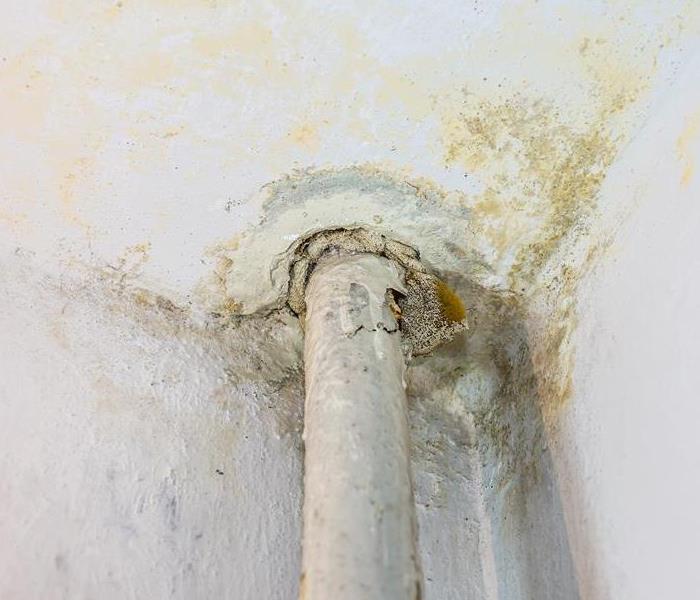 A pipe break can cause significant damage, call a professional to ensure a successful recovery.
A pipe break can cause significant damage, call a professional to ensure a successful recovery.
Experiencing a pipe break in your home can be a distressing situation, potentially leading to significant water damage if not handled promptly. Acting swiftly and knowing the right steps to take can help minimize the impact of the pipe break and ensure a successful recovery. In this blog, we will guide you through the essential steps to follow after a pipe break, enabling you to mitigate water damage, protect your property, and restore normalcy.
Shut Off the Water Supply
The first and most crucial step is to shut off the water supply to the affected area. Locate the main water shut-off valve in your home and turn it off to prevent further water flow. If you're unsure of the location or have individual shut-off valves for specific areas, such as sinks or toilets, turn off those valves instead.
Assess the Damage
Evaluate the extent of the water damage caused by the pipe break. Inspect the affected area and surrounding spaces for signs of water pooling, wetness on walls or ceilings, or any structural damage. Take photographs or videos of the damage for insurance purposes.
Call a Professional Plumber
Contact a licensed plumber immediately to repair the broken pipe. Professionals have the expertise and tools to fix the issue correctly, minimizing the risk of future problems. Avoid attempting a DIY repair unless you have the necessary skills and knowledge.
Remove Standing Water
If there is standing water due to the pipe break, remove it as quickly as possible. Use mops, towels, or a wet/dry vacuum to soak up the water. Ensure proper ventilation and airflow by opening windows and using fans or dehumidifiers to aid in drying the affected area.
After removing standing water, focus on thoroughly drying the affected area to prevent mold growth and further damage. Use fans, dehumidifiers, and natural airflow to facilitate drying. Monitor moisture levels with a moisture meter and ensure that all surfaces are completely dry before proceeding with repairs.
Salvage and Clean Personal Belongings
If personal belongings or furniture have been affected by the water, move them to a dry area and assess the damage. Salvage items that are salvageable and set aside those that require professional cleaning or restoration. Thoroughly clean and disinfect any items that have come into contact with the water.
Assess Structural Damage
Inspect walls, floors, and ceilings for signs of structural damage caused by the pipe break. Look for sagging, cracking, or warping. If significant structural damage is present, consult a professional contractor or structural engineer for further evaluation and necessary repairs.
Take thorough documentation of the damage, including photographs, videos, and written descriptions. Contact your insurance company to report the incident and initiate the claims process. Provide them with the necessary documentation and keep a record of all communication with your insurance company.
Dealing with a pipe break requires quick action and proper handling to minimize water damage and prevent further complications. By following these steps you can effectively navigate the aftermath of a pipe break and restore your home to its pre-damage condition. Remember, if the damage is extensive or if you're uncertain about the necessary repairs, it's always wise to seek professional assistance to ensure a thorough and successful recovery process.
Crawlspace Chronicles: Conquering the Challenge of Removing 2 Feet of Water
6/12/2023 (Permalink)
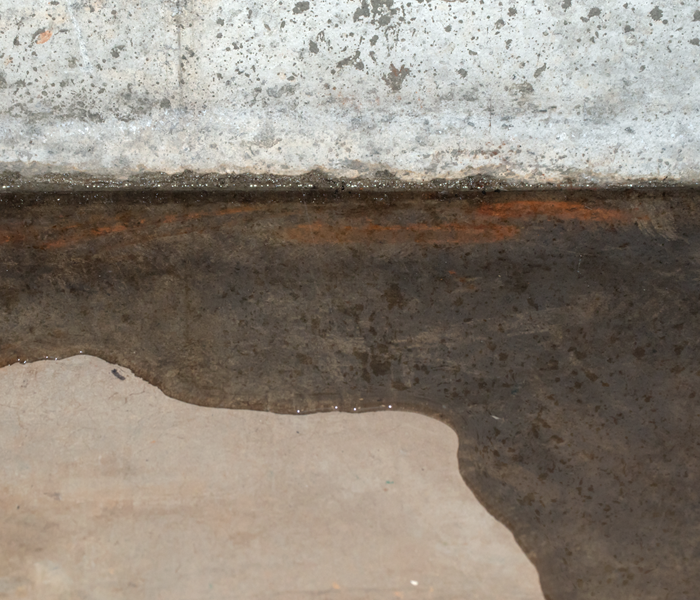 Removing water from a crawl space is crucial for preventing mold and secondary damages.
Removing water from a crawl space is crucial for preventing mold and secondary damages.
A flooded crawl space can be a homeowner's worst nightmare. Whether it's caused by heavy rainfall, a burst pipe, or a plumbing mishap, dealing with standing water in your crawl space requires immediate attention to prevent further damage. In this blog, we'll guide you through the step-by-step process of safely removing 2 feet of water from your crawlspace, helping you restore your home to a dry and secure state.
Step 1: Prioritize Safety
Before diving into the water removal process, ensure your safety by following these precautions. Turn off all electrical power in the crawlspace to avoid electrocution hazards. Wear protective clothing, including rubber boots, gloves, and a face mask to minimize contact with potentially contaminated water.
Step 2: Assess the Situation
Evaluate the extent of the water damage and identify the source of the flooding if possible. This will help you determine the best approach for removing the water. Additionally, take note of any valuable items or furniture that might have been affected and prioritize their recovery.
Step 3: Pumping out the Water
To remove the substantial amount of water from your crawlspace, you'll need to employ a reliable pump. Follow these steps:
- Rent or purchase a submersible pump capable of handling large volumes of water.
- Locate the lowest point in your crawlspace and position the pump there.
- Connect a hose to the pump and direct it away from your home's foundation, ensuring proper drainage.
- Plug in the pump and allow it to run until all the water has been pumped out. Be patient, as this process may take several hours.
Step 4: Drying and Ventilation
Once the water has been removed, focus on drying out the remaining moisture to prevent mold growth and further damage. Use a wet/dry vacuum or mop to remove any residual water from the surface. Open all doors, windows, and vents to promote cross-ventilation and increase airflow in the crawlspace. Place dehumidifiers and fans strategically throughout the space to expedite the drying process. Monitor humidity levels regularly and adjust the equipment as needed.
Step 5: Inspect and Repair
Once your crawlspace is completely dry, thoroughly inspect the area for any signs of damage. Look for structural issues, mold growth, and compromised insulation. Address these problems promptly by contacting professionals if necessary. Additionally, take preventive measures to avoid future water intrusion, such as repairing leaks, improving drainage systems, or installing a sump pump
Step 6: Clean and Disinfect
Even after the water is removed, it's crucial to clean and disinfect the crawlspace to eliminate any secondary damages. Scrub the walls, floor, and any affected surfaces with a solution of warm water and bleach or a specialized disinfectant. Dispose of any water-damaged materials, such as insulation or carpet, that cannot be effectively cleaned or salvaged. Use a mold inhibitor to further prevent mold growth in the future.
Removing water from a crawlspace is a challenging task that requires careful planning and execution. By following these steps and taking appropriate safety measures, you can effectively mitigate the damage, restore your crawlspace to a dry state, and prevent further issues like mold growth. However, if you're uncertain or the damage is extensive, it's always advisable to consult with professionals who specialize in water damage restoration to ensure a thorough and proper recovery process.
Moisture Control 101: Essential Tips for Preventing Mold in Your Home
5/17/2023 (Permalink)
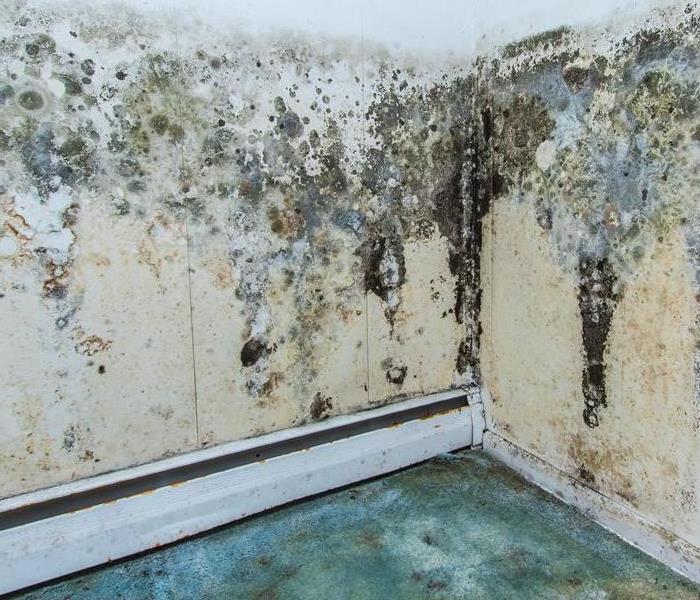 Preventing mold from taking over your home by following these few steps.
Preventing mold from taking over your home by following these few steps.
Mold is a common problem in many homes, and it can not only damage the aesthetics of your living space, but cause secondary damages to your home or business. Mold thrives in environments with excessive moisture, making it crucial to control moisture levels in your home to prevent mold growth. In this blog post, we will provide you with essential tips for moisture control to help you prevent mold from taking hold in your home.
Fix leaks promptly
Any water leaks in your home, whether it's from a pipe, roof, or window, should be addressed immediately. Water leaks provide a prime breeding ground for mold growth, and even minor leaks can create enough moisture for mold to thrive. Regularly inspect your home for any signs of leaks, such as water stains, dampness, or musty odors, and fix them promptly to prevent mold from gaining a foothold.
Ensure proper ventilation
Proper ventilation is key to controlling moisture in your home. Use exhaust fans in the bathroom, kitchen, and laundry room to vent moisture to the outside. Make sure that your dryer is vented to the outside as well. Open windows and doors regularly to allow fresh air to circulate and promote airflow, which helps to reduce moisture levels and discourage mold growth.
Control indoor humidity
Keeping indoor humidity levels in check is crucial in preventing mold growth. Use a dehumidifier in areas with high humidity, such as basements, crawl spaces, and bathrooms, to reduce excess moisture in the air. Aim to maintain indoor humidity levels below 50% to discourage mold growth. You can also use air conditioners to help reduce humidity during hot and humid weather.
Insulate properly
Proper insulation is essential in preventing condensation, which can lead to mold growth. Insulate your home properly, including walls, floors, and roofs, to prevent moisture from seeping in and creating a conducive environment for mold to thrive. Insulation also helps to regulate indoor temperatures, reducing the risk of condensation.
Keep your home clean and dry
Regular cleaning and maintenance are key to preventing mold growth. Clean up any spills or water damage immediately and dry affected areas thoroughly. Don't leave wet or damp items lying around, and avoid over-watering indoor plants. Regularly clean and dry your bathroom, kitchen, and other high-moisture areas to prevent mold from taking hold.
Use mold-resistant materials
When renovating or building, consider using mold-resistant materials, such as mold-resistant drywall, paint, and insulation. These materials are designed to resist mold growth and can help in preventing mold problems in your home.
Gutters and downspouts
Gutters and downspouts play a crucial role in directing water away from your home. Make sure your gutters and downspouts are clean and free of debris, and that they are directing water away from your home's foundation. Properly functioning gutters and downspouts can prevent water from seeping into your home and causing moisture problems.
In conclusion, controlling moisture is essential in preventing mold growth in your home. By promptly fixing leaks, ensuring proper ventilation, controlling indoor humidity, insulating properly, keeping your home clean and dry, using mold-resistant materials, and maintaining your gutters and downspouts, you can effectively prevent mold from taking hold in your home. Regular inspections and maintenance are key to identifying and addressing any moisture issues before they turn into mold problems. By following these tips, you can create a healthy and mold-free environment in your home.
Mastering Mold: Essential Tips for Preventing Mold Growth in Your Home
4/28/2023 (Permalink)
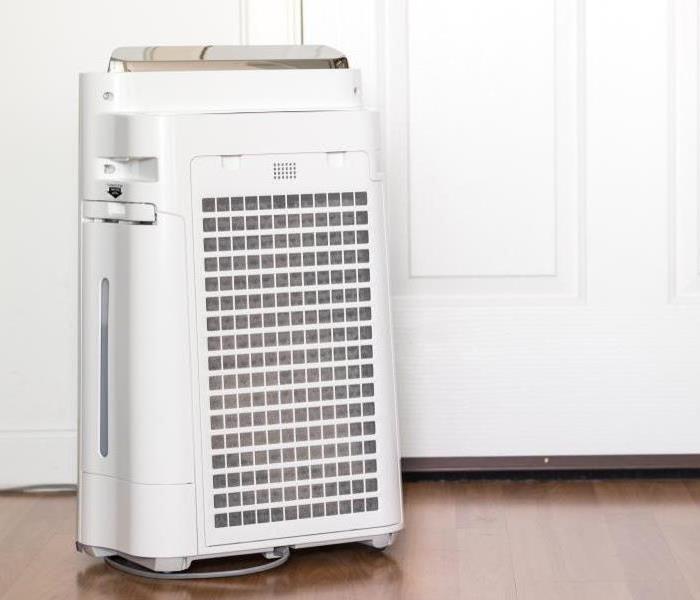 Make your home a healthy living environment for your family.
Make your home a healthy living environment for your family.
Mold growth in homes can be a common problem that not only damages the aesthetic appeal of your living space. Mold thrives in moist environments and can spread quickly. Fortunately, preventing mold in your home is possible with proper moisture control. In this blog, we will explore some tips to help you keep mold at bay and maintain a healthy living environment.
Identify and Fix Water Leaks
Water leaks can occur in various places in your home, such as pipes, roofs, windows, and foundations. Identifying and fixing these leaks as soon as possible is crucial in preventing mold growth. Regularly inspect your home for signs of water damage, such as water stains, musty odors, and dampness. If you notice any leaks, have them repaired promptly by a professional to prevent moisture buildup and mold growth.
Maintain Proper Ventilation
Proper ventilation is essential in preventing mold growth. Moisture tends to accumulate in areas with poor air circulation, such as bathrooms, kitchens, and basements. Make sure your home is properly ventilated by using exhaust fans in high-moisture areas, opening windows to allow fresh air to circulate, and using dehumidifiers in humid areas. Good ventilation helps to reduce excess moisture, making it harder for mold to grow.
Control Indoor Humidity
Mold thrives in humid environments, so controlling indoor humidity levels is crucial in preventing mold growth. Keep indoor humidity levels below 50% by using a hygrometer to measure humidity levels and using a dehumidifier or air conditioner to reduce excess moisture in the air. Avoid drying clothes indoors, and make sure your home is well-ventilated to prevent humidity from building up.
Insulate Your Home
Proper insulation is important in preventing mold growth. Insulate your home properly to prevent condensation and moisture buildup on walls, ceilings, and floors. Insulated windows and doors can also help prevent moisture from seeping into your home, reducing the chances of mold growth.
Pay Attention to Outdoor Drainage
Proper outdoor drainage is essential in preventing moisture from seeping into your home. Make sure your gutters and downspouts are clean and functioning properly to prevent water from overflowing and causing moisture problems. Ensure that the ground around your home slopes away from your foundation to prevent water from pooling and seeping into your basement or crawl space.
Keep Air Ducts Clean
Your home's HVAC system plays a crucial role in maintaining indoor air quality. Dirty air ducts can harbor dust, debris, and mold spores, which can circulate in your home and contribute to mold growth. Regularly clean and maintain your air ducts to prevent mold from spreading through the ventilation system. Hire a professional duct cleaning service to ensure thorough cleaning and maintenance.
Be Mindful of Basement and Crawl Space
Basements and crawl spaces are prone to moisture issues due to their location below ground level. Regularly inspect these areas for signs of moisture, such as dampness, musty odors, or water stains. Install a vapor barrier and use a dehumidifier in these areas to control moisture levels and prevent mold growth.
In conclusion, mold growth in homes can be prevented with proper moisture control. Regular inspection, prompt repair of water leaks, adequate ventilation, controlling indoor humidity, proper insulation, keeping your home clean and dry, addressing condensation, prompt action after floods or water damage, mindful indoor plant care, using mold-resistant materials, clean air ducts, and proper care of basement and crawl spaces are some key steps to prevent mold growth. By implementing these tips and being proactive in moisture control, you can safeguard your home against mold and maintain a healthy living environment for you and your family.
Prevent water damage while on Vacation
3/13/2023 (Permalink)
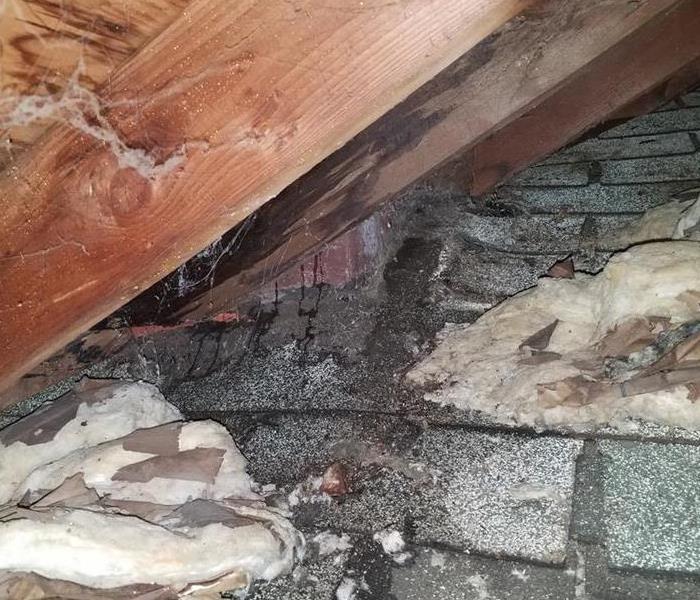 Take precautions when you leave for vacation.
Take precautions when you leave for vacation.
Vacationers, beware! Water damage can be costly and a messy hassle to deal with when you're already away from home. If you haven't already done so, it's important that you take precautions to prevent water damage in your home while you're on vacation. Follow these simple tips for preventing water damage on vacation.
Water damage can be costly.
Vacationers' homes can be left vulnerable to water damage if they're not careful. Water damage is a serious problem that can cost homeowners thousands of dollars in repairs. While vacationers may think they'll be back before any problems arise, it can take weeks or months for insurance claims to be processed and repaired homes restored by contractors. And even then, some types of water damage can be difficult or impossible to repair after the fact, especially if you don't know what signs indicate that there might be an issue at all.
A quick action plan.
Water damage can be expensive to repair and cause serious secondary damages if you don't take the right steps to prevent water damage while away from home.
The best way to prevent water damage is by scheduling regular maintenance with a professional plumber who knows your plumbing system inside and out and who will know how best to handle any situation that arises when you're away from home for an extended period of time.
Keep appliances clean and dry.
Make sure all appliances are clean and dry to prevent any water damage could become a potential loss. Don't leave the dishwasher running when you're not home and ensure now water is sitting in the bottom before leaving that could cause a water loss. Don't leave the washing machine running when you're not home. And most importantly don't leave the dryer running when you're not home which could lead to a potential fire.
Make sure your home is properly insulated.
Water damage is a common problem for many homeowners, but it's easy to prevent. By making sure that your home has proper insulation and ventilation, you can limit the amount of moisture in the air and keep yourself safe from mold and mildew growth.
Maintaining proper insulation levels in your home will help prevent cold drafts from entering through cracks in walls or windowsills. This not only keeps out unwanted weather conditions out but it also helps keep heat inside during winter months. In addition, insulation reduces noise pollution by dampening sounds from outside sources such as traffic or neighbors, tv and even foot steps from upstairs. Lastly, improved energy efficiency leads directly back into saving money on utility bills each month.
Install a backup sump pump system.
A backup sump pump system is a highly beneficial and cost-effective way to prevent water damage on vacation. It's easy to install, and it can be placed anywhere in your home or office.
A backup sump pump system works by pumping water out of the basement when storms are approaching. This prevents flooding from occurring, which is especially important if you have valuables stored dow stairs ere such as electronics or furniture that could be ruined by water damage. Store valuables in waterproof containers until you return home.
Water damage can be prevented, but it takes effort and planning ahead of time
Water damage can be a costly problem. It's also preventable, but the key is to plan ahead of time and take precautions. Make sure your home is secure before you leave. Make sure that all windows and doors are locked, and don't forget about things like garage doors and automatic gates.
Keep an eye on weather forecasts for where you're going especially if there's been recent flooding or other extreme weather events nearby. Check local news reports online as well to ensure your home id safe while left unattended.
While it's tempting to leave everything behind when you go on vacation, it's important to take precautions against water damage. The best way to do this is by making sure your home is properly insulated and has backup sump pump systems installed. If you have any questions about how these systems work or whether they're right for your home, contact us today!
Protect your home from Water Damage
3/7/2023 (Permalink)
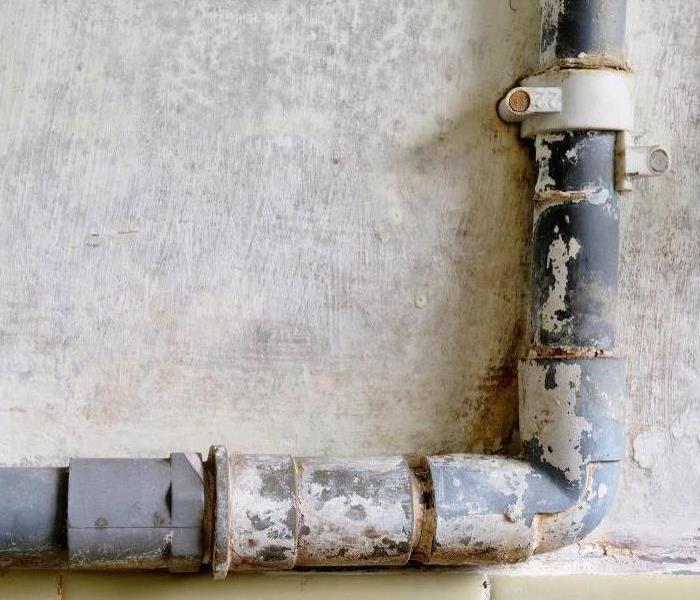 Protect your home from water damage.
Protect your home from water damage.
Water damage is one of the most common problems homeowners face. It can range from small leaks and moisture stains to major floods that destroy your home’s structure. If you suspect that there’s water damage in your house, don’t hesitate to call a professional for help. This guide will give you some tips for preventing water damage in your home so that you don't have to deal with this issue before it becomes a problem!
Check your house for signs of water damage.
Check the basement, attic and crawl spaces. Look for signs of water damage on the walls and floor. Keep a check on windows and doors for signs of water damage, especially after a storm or flood.
Keep an eye on your water bill for unusual spikes.
One of the best ways to tell if your home has experienced water damage is by checking the water bill. If you notice an unusual spike in your usage, it could be an indicator that there's been some type of leak or flooding in your house.
If this happens, check around for signs of damage--a burst pipe may have caused wet carpeting or walls; a leaking roof could mean mold growth on wood surfaces (like in basements). If there are no visible signs of damage, call up your utility company right away so they can come out and check their meters before any more charges get added onto your bill.
Look for signs of wear in your pipes and faucets.
Look for signs of wear in your pipes and faucets. If you see any, it's time to call a plumber.
Faucet washers can wear out over time, causing water leaks that lead to costly repairs or replacement. The same thing can happen with pipes if they're exposed to hard water or acidic solutions (like bleach), which corrode them from the inside out.
Look out for cracks in the foundation of your home.
If you notice cracks in the foundation walls, or if there are any holes in the floorboards and wallboards, it may be time to call a professional. The best way to ensure that your home is safe from water damage is by getting an inspection. If you do find signs of water damage after a storm or flood, contact a contractor immediately so they can fix the problem before it gets worse.
Regularly clean out the gutters on your house.
Regularly cleaning the gutters on your home is one of the best ways to prevent water damage. If you don't clear debris from your gutters, leaves and other debris can clog them, causing water to back up in your home. To avoid this, remove leaves from the gutter before they have a chance to block it. You should also make sure that rainwater isn't pooling on top of a leaf pile or other type of obstruction, if there is too much pressure against these barriers, they may give way and allow water into places where it shouldn't go--like behind walls or under floors.
Make sure that you're not overwatering your lawn.
Overwatering is another major cause of water damage to your home. When you have a lawn, it's important to make sure that you're not overwatering it. Overwatering can cause root damage and lead to disease or insect infestations, which will damage the grass even more.
The best way to prevent this is by using a soil moisture meter and watering deeply but infrequently (once per week). You should also use a sprinkler with a low flow rate so that there isn't too much pressure on the roots when they are exposed during watering cycles.
Preventing water damage
Preventing water damage is much easier than dealing with it once it occurs. Water damage can be very expensive to fix. If you don't want to spend the money or time that comes with repairing water damage, make sure there's no standing water in your home by checking sinks and tubs regularly for leaks (and fixing them when necessary).
We understand that water damage can be a stressful situation to deal with, but the good news is that there are many things you can do to protect yourself from it. Water damage can be expensive and time-consuming to repair, so taking steps now will help ensure that your home stays dry for years to come!
Mold: Questions You Might Be Afraid to Ask
1/10/2023 (Permalink)
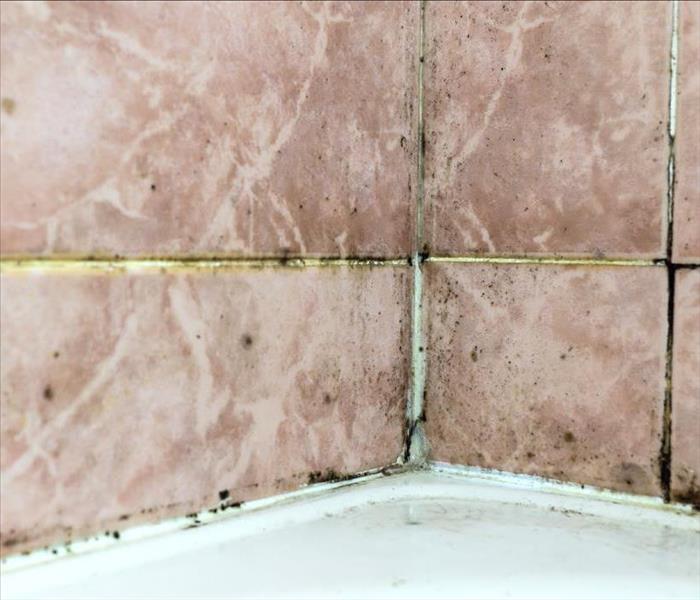 Mold growth in bathtub caulking
Mold growth in bathtub caulking
FAQ: Mold
Mold is a fungus that can grow on many surfaces indoors. It thrives in warm, damp environments. When you breathe in mold spores, they can cause health problems. If your home has mold growing on walls, ceilings, or floors, we recommend hiring a professional to remove the mold and make repairs before it spreads further into the structure of your home. Here are some common questions about mold that you may not know the answers to:
What is mold?
It is true that mold can be found almost everywhere. While it's not always bad to have a few molds in your home, if you have an extensive problem or there are people who are allergic to them, it can become a serious problem. Molds are a type of fungus that comes in many shapes and forms. In fact, there are over 100,000 different types of molds!
Mold spores are microscopic organisms that grow on almost any surface (such as wood or paper). They spread by releasing millions of spores into the air around them—and if these spores land somewhere with enough moisture and food (like in your carpet), they'll start growing more molds. This means that mold moves around from place to place easily; which means you could get some from one room to another just by going from one room to another!
How does mold get in my home?
You're not alone in your fear of mold. It's a problem that affects the health of millions of people, and it can be hard to tell if you have mold growing in your home. Mold spores are everywhere—in soil, plants, trees, on all kinds of surfaces—and they're brought into homes by air currents. They can also enter through windows and doors when they're left open or there's been a water leak in the house. If you leave a window or door open during bad weather, this is another way for mold spores to get inside.
The most common way for mold to get into your home is via water leaks such as those caused by floods or burst pipes (or even from taking showers!). If you notice any dampness on walls or ceilings that doesn't go away after drying out properly then chances are good that it's because of some kind of leak somewhere inside the building itself - which means there may be hidden problems with moisture control that need addressing before long!
What does mold need to grow?
Mold needs a few things to grow. The first thing is moisture. It's no secret that mold thrives in damp environments, but it can grow even if there is just a little bit of moisture present. The second thing mold needs to grow is food sources for its colonies. This means any organic material like wood, drywall, or cardboard makes for an ideal food source for mold to consume as it grows. Mold also needs temperatures between 70-90 degrees Fahrenheit (21-32 Celsius) to survive.
Can mold grow on my clothes?
Yes, mold can grow on clothes. It’s actually common for mold to grow in your dryer lint trap and on damp clothes when you hang them up to dry. Whether or not your clothing is likely to sustain damage from this depends largely on what kind of fabric it is made from. Dry cleaning materials are more resistant to mold than other fabrics, but they can still become damaged if you don’t remove the moldy clothing right away.
Can mold grow on tile and grout or bathtub caulking?
Yes, mold can grow on tile and grout. Mold growth on grout may be more likely in an area that has had moisture problems or where there is poor ventilation. In addition, if the grout is older than 10 years old, it may be more porous and vulnerable to fungal growth.
Mold can also grow on bathtub caulking around the tub edge or between a bathtub and its surrounding wall. If you have questions about whether your caulking needs cleaning or replacing, contact a professional contractor for advice before doing any work yourself.
Why should I hire a professional to clean up a mold problem in my home?
Mold remediation is a specialized field. While most contractors can remove mold, they don't have the expertise and equipment needed to fully clean up your home and prevent future mold growth. If you hire a professional contractor, they will use specialized equipment to safely remove all of the molds in your home. They'll also make sure that there are no hidden reservoirs of moisture where more mold can grow later on. If you want your home to be completely safe from future molds, hire a professional like SERVPRO of Central East Baton Rouge. We will remediate the mold in your Baton Rouge, LA home and get you back to normal as quickly as possible.
5 Essential Items to Have During an Emergency
12/7/2022 (Permalink)
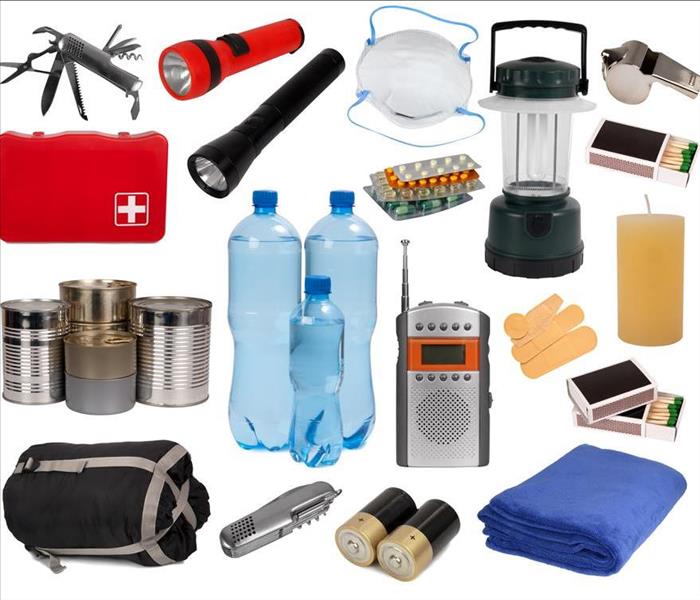 Create an emergency kit for yourself and your family.
Create an emergency kit for yourself and your family.
How To Prepare For An Emergency
You are reading this article because you want to know what essential items you should have on hand in case of an emergency. That's a good place to start. But it's also important to remember that emergencies don't always happen at convenient times or places—and they affect more than just your home and immediate family. So, think about how you can best prepare for an emergency by creating an emergency kit for yourself and your family, including pets if possible!
Food and Water
Food and water are essential to survival. It's best to store at least 72 hours worth of food and water per person, but if you can afford it, go ahead and stock up on more. This is especially important if you have children or elderly family members as well as pets or other animals—you should be prepared for them too!
Clothing and Bedding
Clothing should be comfortable, versatile and easy to put on. Bring layered clothing that will protect you from the elements, rather than just one or two pieces of clothing that you would need to change into if your home were to become inaccessible due to flooding or fire. Include shoes and socks so that the entire family has something warm with which to walk if necessary. A hat and gloves are also important because they can help keep your head warm in cold temperatures or protect it from sunburn on sunny days when there's no shade available for protection.
First-Aid Supplies
As you plan for an emergency, it’s important to be prepared with the right first-aid supplies. This can include a first-aid kit and other life-saving items such as bandages, tape, scissors, gauze pads and more. A basic kit should contain:
- Bandages of different sizes
- Adhesive tape in several widths
- Scissors for cutting the tape or fabric bandages
- Sterile pads like gauze dressing pads or sterile eye pad strips (for covering wounds on your face)
- Nonadherent dressings (these are adhesive dressings that do not stick to skin)
Tools and Emergency Supplies
Have a fire extinguisher and make sure that it is in working order. You can buy an inexpensive one at your local hardware store, or you could get one of the more expensive models that can be used on all kinds of fires.
If there is a fire, you should also have items for getting out of your house if necessary. This might include a flashlight and extra batteries for it, along with rope or string so you can make a rope ladder from the roof to the ground if needed. You may also want to have a first aid kit with some basic supplies like bandages and antibiotic ointment in case someone gets injured during an evacuation due to smoke inhalation or other problems caused by the fire itself (such as burns).
It's also important to keep extra batteries for any electronic devices such as phones or tablets because they may not work after an emergency situation due to power loss or network coverage issues caused by damage done during disasters such as floods or earthquakes."
Special Items
If you have a household member who requires special items during an emergency, be sure to include them in your kit. It’s important to keep medications on hand at all times, but in an emergency situation where there may not be accessible to a pharmacy or doctor, it’s more crucial than ever. In addition to medications for chronic conditions such as asthma and diabetes, having basic first aid supplies can make life much easier for those with special needs. If you have someone with limited mobility or sight (for example), the ability to move around independently might be even more important than usual.
Also consider including items that are necessary for children: diapers, formula, and baby food if applicable; blankets; books; games and activities that require little set-up time (think travel versions of popular board games). Make sure these are already packed before any kind of situation arises so everyone can focus on whatever crisis is happening outside their home instead of worrying about making sure they have everything they need inside their house too!"
Create a Disaster Plan
The more prepared you are, the greater chance you have of making it through an emergency unscathed. If you’re part of a larger community—for example, if there is an office or school nearby—you may also want to work together on creating a shared disaster plan.
The goods included in this kit will vary depending on what type of emergency it is that's being faced, but all essentials should be portable and easy to carry around with you if necessary (though not too heavy). Remember: food and water are vital!
If your home were hit by a natural disaster like fire or flooding, how would you take care of yourself? Can someone else take care of themselves? When the electricity goes out during a storm or earthquake, how do you cook food so everyone stays healthy?
A disaster can happen at any time, but you’ll be prepared if you have the right supplies on hand. As we know from experience, being prepared with a plan and supplies is essential to keeping your family safe during an emergency. We hope this article has given you some ideas about what to include in your own emergency kit so that everyone in your household is ready for anything life throws their way!
If your home or business is struck by fire, water, or storm, SERVPRO of Central East Baton Rouge is here to help you restore your Baton Rouge property back to its preloss condition.
Why Is There Water Under My Cabinet?
11/15/2022 (Permalink)
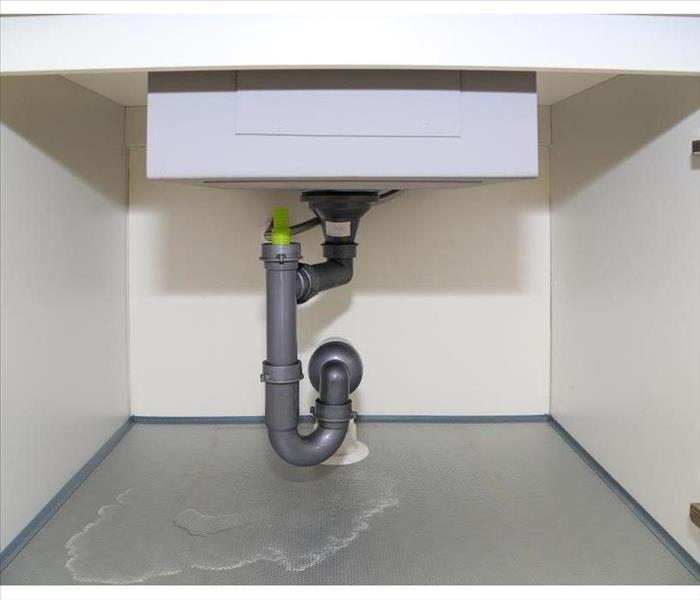 The presence of water under the kitchen cabinets is not ideal.
The presence of water under the kitchen cabinets is not ideal.
Why Is My Cabinet Under Water?
Water under the kitchen cabinets is not a good sign. It usually means there's a leak in your pipes, and it should be dealt with ASAP to prevent any further damage. If you notice water under the kitchen sink, follow these steps as soon as possible to minimize water damage.
Whether it's a stain or water pooling in the cabinet, water under the kitchen cabinets is not a good sign. If you're not sure why there's water under your cabinets, here are four things to keep in mind:
- Water damage can be expensive to fix. The sooner you deal with a leak, the better—especially if it's coming from pipes located inside an exterior wall. In this case, you may want to call your insurance company as soon as possible and ask them what steps you should take next.
- Waiting too long could cause more problems than one leaky pipe!
If you notice water under the kitchen sink, follow these steps as soon as possible to minimize water damage.
- Shut off the water supply. The first thing to do after noticing water under your cabinet is to turn off the main valve that controls the water supply to your house. Turn it clockwise until it's closed, and then confirm that there is no more running water in your sink or tub before proceeding further.
- Check for leaks in pipes or fittings. If there are leaks anywhere on your plumbing system, they need to be addressed before anything else can be done with this situation.
Shut off the water supply.
If you notice water under your cabinet, the first thing to do is shut off the main water supply. This can be done by turning off the main valve on your house or apartment building if it hasn't already been turned off.
If you're not sure how to find this valve or how to turn it off, call a plumber who can help. If there are multiple shut-off valves under sinks in your home, turn them all off as well — but keep in mind that doing so may temporarily stop other water sources from working properly until they're all turned back on again!
Check for any leaks in the pipes.
If you discover that your pipes are leaking, you may need to call a plumber. Your water bill will be affected by the leaks, so make sure that you have an accurate record of how much water is being used in your house. The next time the plumber comes by for an inspection, ask him or her about ways to prevent future leaks from occurring.
If you can't find the source of the leak, call a plumber.
If you can’t figure out where the leak is coming from, it might be time to call in a professional. The cabinet company or home builder that installed your cabinets may recommend a plumber or contractor, but if not, you’ll have to do some searching on your own.
The first place to look is your insurance company: if you have homeowners' or renters' insurance coverage and the damage was caused by flooding (for example), you may be able to get reimbursed for the cost of repairing or replacing damaged goods like flooring and cabinets. Check with your agent before paying anything out of pocket because they could help you file a claim that could result in savings down the road.
Dry out the cabinet and clean up the area.
If you have a lot of water and your cabinet is still wet, use a wet/dry shop vac to remove as much water as possible. If this doesn't work, check for leaks again. If the leak persists, it's time to call in the professionals.
If you're lucky, the source of the leak will be easy to find and fix. If not, you may have to call a plumber or other contractor to take care of it. If there's water damage under your cabinets, contact your insurance company as soon as possible so they can help cover any costs related to fixing the problem or replacing damaged items like drywall or floorboards if necessary.
How Much Revenue Can I Lose After a Fire Damage?
10/16/2022 (Permalink)
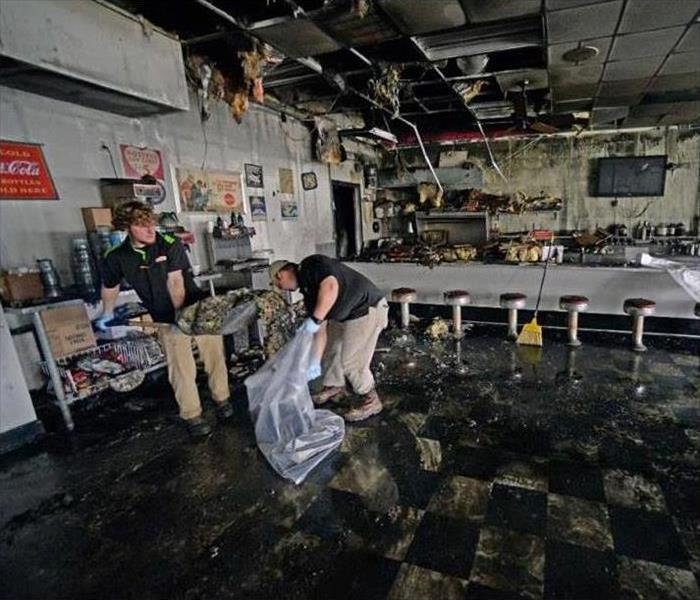 Fire cleanup in a restaurant.
Fire cleanup in a restaurant.
What Happens If Your Business Slows Due To The Interruption Of a Fire
A fire at your business is the last thing you want to deal with. But you can't help but worry about what will happen if your income slows due to the interruption of a fire. Luckily, there is insurance for that: business income coverage.
Before we get into exactly how much revenue can be lost after fire damage affects your business, let's talk about why this type of coverage exists in the first place. Business income insurance helps keep your cash flow coming in after an unexpected event like a fire damages your building or other property. You may be wondering why this is necessary if you've purchased another kind of commercial property policy (like comprehensive or all-risk). If something happens at one part of my building but not another part (and it doesn't affect all parts), then isn't that covered under these other policies? The answer to that question depends on who owns what aspect of the structure damaged by fire:
What is business income coverage?
Business income coverage is a type of property insurance that pays for the loss of income from a covered event. It also goes by the name business interruption insurance and can help pay for extra expenses that keep your business running in the wake of a disaster.
Business income coverage has two parts: indemnity and expense reimbursement. The indemnity component covers lost profits when your commercial property is damaged or destroyed, while the expense reimbursement component ensures money isn't an obstacle to getting back on track after an incident occurs.
Income coverage and extra expense coverage.
An income loss coverage will help you with the loss of revenue after a fire. The reason why this type of coverage is called an “income” loss coverage is because it will cover your business’s income, not its overhead costs.
An extra expense coverage can help you pay for other expenses that arise because of damage to your property, like additional wages for employees who need to work overtime in order to get everything done on time. If your business has employees, you should definitely consider getting this type of policy as well.
Other ways income coverage can help.
When it comes to income coverage, the best way to know you’re properly insured is to speak with a qualified insurance agent. They can help you understand what your policy covers, and whether it will be enough if your business is damaged in a fire.
There are a few things that can affect the amount you can recover after a fire damages your business. Let's look at some of them:
- The amount of damage to the business. If your business is severely damaged, it will cost more to repair or rebuild and open again than if it was only slightly damaged.
- The amount of time your business is closed due to fire damage. If you must close down for several months while repairs are being completed and new equipment installed, you'll lose money that could be used towards paying off debt or investing in other areas of your company.
- The type of insurance coverage you have on hand at the time of fire loss (or other disasters). If other insurance policies cover certain types of losses related to fires—such as liability claims from injuries caused by smoke inhalation—it may be possible for those policies' limits to exceed what's offered through commercial property insurance alone.
How much revenue can be lost?
The damage from a fire may affect your business in two ways: the immediate loss of revenue and the long-term loss of revenue.
The immediate loss of revenue occurs when your business is unable to operate due to fire damage. For example, if you are a restaurant and your building has sustained significant damage from smoke or water infiltration, you will likely be unable to open for business until repairs are made and inspections completed. The loss during this period may be temporary or permanent depending on the extent of damage sustained by your property and other factors related to the situation at hand (elements such as insurance coverage).
Business income insurance helps keep your income coming in after fire damage.
There's a type of commercial property insurance that can help you recover the revenue you lose after fire damage. It's called business income insurance, and it's designed to cover the losses your business sustains when you're unable to sell goods and services due to an insured property loss.
Business income insurance covers your costs for things like:
- Lost profits, including lost revenue from sales (some policies will reimburse you for the cost of goods sold)
- Additional advertising expenses caused by the interruption in your business operations (e.g., newspaper ads)
- Extra wages paid to employees who were unable to work because of the fire
Remember that it's important to get business income insurance. In the event of a fire, this insurance can help you keep your business running and make sure you're protected against losses like this in the future. We hope you found this article helpful as well!
4 Ways a Board Up Secures Your Home After a Fire
8/29/2022 (Permalink)
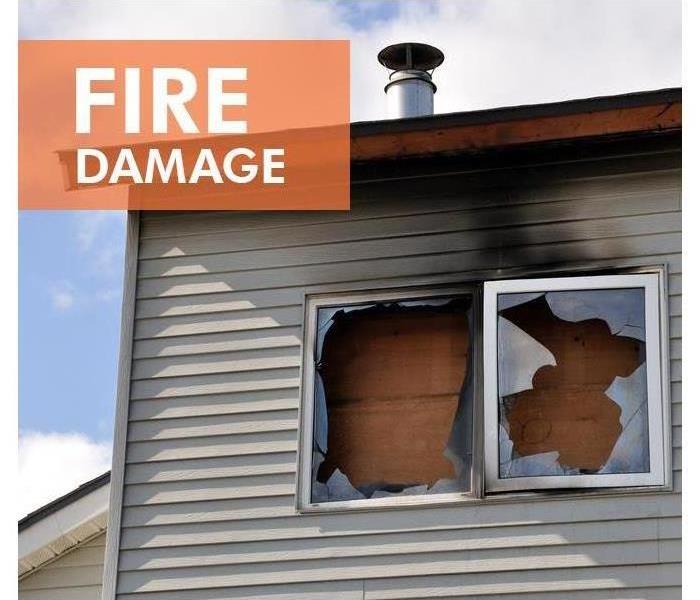 Secure your home after a fire
Secure your home after a fire
Four Techniques for Securing Your Home After a Fire
Your home in Monticello, LA, is particularly vulnerable right after a fire. The flames have likely caused structural damage to your home, and fire fighting efforts often bust down doors, crash in windows and even blast holes into your roof. Once the fire crew has departed, you are left with a home that is exposed to the elements, leaving open the possibility of further damage. A board up might be your best option to secure your home. It protects the house from multiple dangers.
1. The weather - An emergency board up makes sure a sudden rainstorm doesn't soak your home. The boards will cover openings and prevent water from entering. In some cases, the restoration crew will put a tarp over a roof to give better weather protection.
2. Criminals - A damaged home can be seen by some people as an invitation to take a look inside. They are more likely to enter a house that has easy access. A professional board up will makes things more difficult for thieves and vandals to get into your home after a fire.
3. Animals - Animals seek out shelter in homes even in the best of times. The damage from a fire allows animals such as squirrels, bats, rats and birds to take up residence in your home. These critters can even cause additional damage to your property if you do not take appropriate action after fire damage.
4. The curious - Children and even curious adults sometimes see a vacant home after a fire as a place to explore. This could create liability issues for your property. Since a home after a fire is likely to be full of hazards, you definitely do not want people roaming around inside it.
A professional fire restoration company will be experienced in securing your home after a fire. The workers will be able to install a board up safely. This will keep your home secure until the damage is fixed and your home is restored.
Smoke Damage in Commercial Buildings Usually Requires Professional Help
8/20/2022 (Permalink)
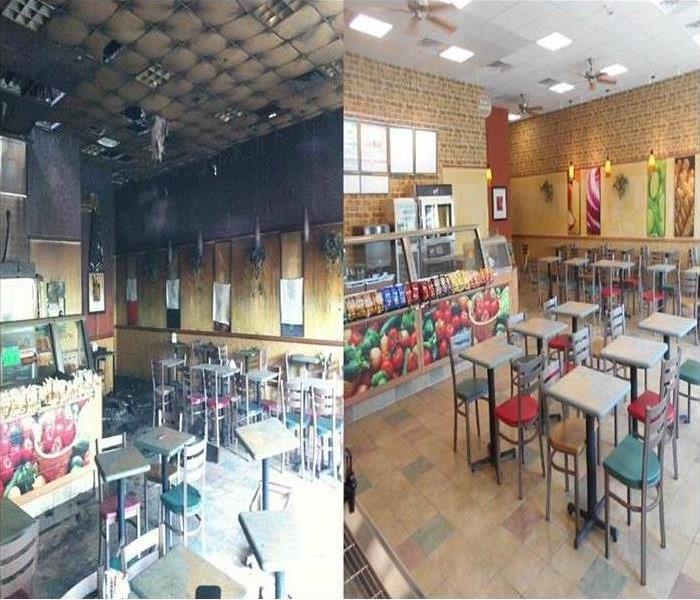 Smoke cleanup services in Baker, LA
Smoke cleanup services in Baker, LA
Fires are by nature a destructive event. Probably worse than the fire itself is the smoke damage, which will spread much further than the burn damage. A small fire in Baker, LA, can release an incredible amount of smoke, which tends to get into every nook and cranny.
If the damage is extremely isolated and there’s no soot damage, you may be able to clean it yourself. Once a sooty residue is left behind or the damage has gone beyond a single room, you’ll certainly need the best professional smoke cleaning available.
Very Small Cleanups Are Possible In-House
A tiny fire, such as something burning on a stove that’s quickly extinguished, can be handled by your employees. There are a few cleaners that will work:
- Rubbing alcohol
- Vinegar
- Tri-sodium phosphate (TSP)
- Bleach
The best bet is usually TSP and water. Mix 1 tablespoon of TSP into a gallon of water and wipe off the smoke damage. You can add a cup of bleach for the best smoke cleaning, but don’t use bleach on items that aren’t colorfast, such as fabrics and drywall.
Heavy Cleaning Requires Certified Cleanup Specialists
Smoke is a really nasty substance. It’s oily and acidic and the tiny particles can get places that aren’t protected, including inside electronics and appliances. It can contain toxic elements and it’ll leave stains on many surfaces. Specialized equipment and solvents are needed for significant damage.
The Institute of Inspection Cleaning and Restoration Certification (IICRC) is the national organization that certifies select local restoration experts in Baker, LA. Companies that meet the standards have technicians who must attend a smoke cleanup and restoration course and pass an exam.
Soot is very sticky and can be impossible to clean without dangerous cleaning agents restricted to those who are trained to use them. Furniture and clothing can often be saved by using IICRC approved methods to remove soot damage. The more absorbent materials are, the harder they are to clean, so expert help is essential. SERVPRO eliminates smoke damage and leaves your business “Like it never even happened.”
3 Steps for Mold Remediation
8/15/2022 (Permalink)
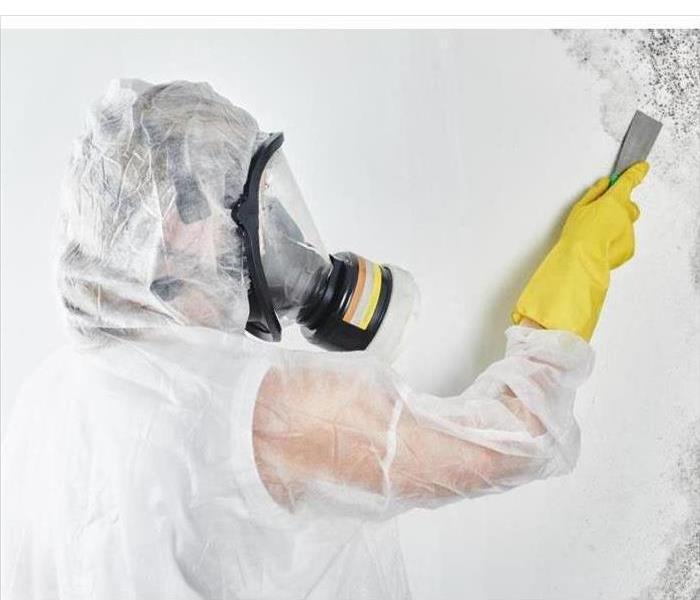 Black mold and other species of fungi can damage your Baton Rouge, LA, home
Black mold and other species of fungi can damage your Baton Rouge, LA, home
Steps For Mold Remediation
When water damage to your Baton Rouge, LA, home leads to black mold growth, you may not know where to begin when it comes to cleanup efforts. Mold may spread quickly if you choose a do-it-yourself process that fails to contain spores, which may make the problem worse later on. Calling in a professional mold removal service can help resolve this issue, and there are several steps its technicians may take to do so.
1. Inspection
When a mold cleanup crew arrives at your home, the technicians will likely assess the situation by inspecting any affected areas and gauging whether the problem has spread. The techs may also take steps to identify what kind of mold they must remove. Black mold is quite common after a flood or other types of water damage, and they may seal off the area to prevent spores from spreading.
2. Removal
Because removing mold can cause spores to break free and travel through your home’s heating and cooling system, the mold technicians may use a spray called an encapsulant to trap the mold where it grows. Once the fungi are contained, the technicians will likely use specialized techniques to remove it and treat surrounding areas as well, especially if they were affected by any moisture issues.
3. Air Cleaning
A mold remediation and removal service can do more than remove the visible mold in your home, such as cleaning the air to reduce the number of mold spores. Special vacuums and air exchange machines help them to accomplish this, which reduces the risk that airborne spores will travel to another area in your home and grow there. Because mold needs only humidity and moisture to grow, it can take hold in your bathroom, kitchen or laundry room.
Black mold and other species of fungi can damage your Baton Rouge, LA, home after a flood or other water event. Knowing when to call in a professional mold removal service and understanding the steps necessary can offer you peace of mind for the future.
The Pros and Cons of Using Drain Cleaners
7/30/2022 (Permalink)
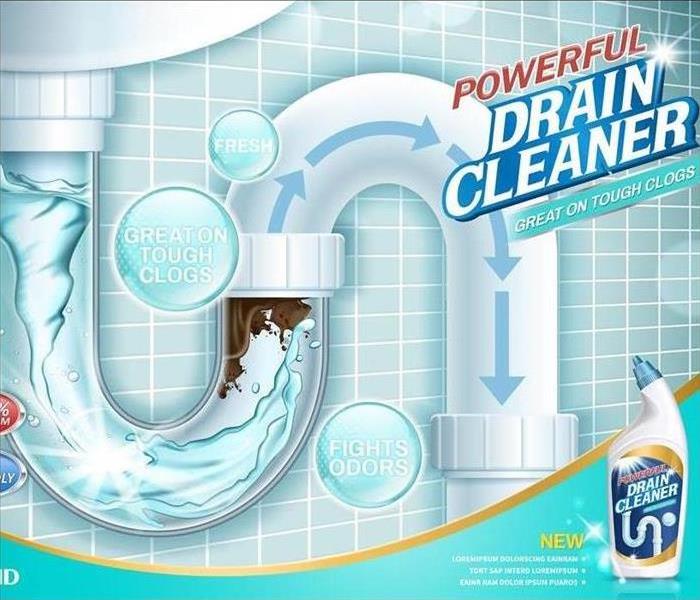 The pros and cons of using drain cleaners.
The pros and cons of using drain cleaners.
The Pros and Cons of Using Drain Cleaners
When water begins to drain slowly, it is a sign of trouble. Without some plan of action, the problem usually gets worse until you are faced with a clogged drain. It is one of the more common plumbing issues you are likely to encounter in Monticello, LA. You have a few broad options for clearing the drain:
- Hiring a plumbing contractor
- Using mechanical means such as a drain snake or manually clearing the pipe
- Pouring a drain cleaner down the drain
Depending on the problem, the first option might be overkill and could cost a bit of money. The second option requires a little bit of knowledge and a few tools, but it often works fine. The third option seems quick and easy, but is it really good for your pipes and your overall plumbing system?
The Dangers of Drain Cleaners
In some circumstances, using chemicals to clear a clogged drain might be appropriate. However, they should be used sparingly and it is a good idea to be aware of their disadvantages. In some instances, especially with fats, oils, and grease (FOG), the chemicals may clear the clog only to have it move further down the plumbing, where it could cause another blockage. Harsh chemicals can also be harmful to the environment, as they end up in lakes, rivers, and streams. Also, the use of a chemical drain cleaner poses a small risk to the user, as inhaling the vapors and getting it on your skin can cause irritation.
The Benefits of Water Damage Mitigation
If a plumbing problem causes water damage to your home, the services of a water remediation company may be beneficial. Trained technicians can handle everything from a water spill caused by a clogged drain to a large sewage backup. Sewage cleaning requires special skills and equipment that most homeowners do not have. Quickly taking care of water damage, whatever its source, prevents expensive damage to your home and removes unsanitary conditions.
How Does One File a Flood Claim Safely and Accurately?
7/20/2022 (Permalink)
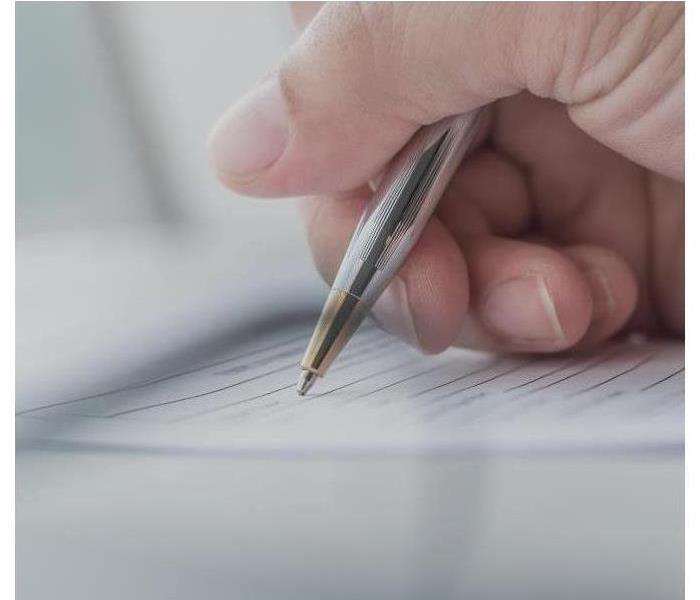 Complete your flood claim as thoroughly as possible
Complete your flood claim as thoroughly as possible
If your house in Zachary, LA, ever becomes flooded, you need to complete your flood claim as thoroughly as possible. Taking proper stock of the damage your home has suffered means an insurer is less likely to issue a denial.
Staying Safe
When conducting your assessment, it’s crucial that you minimize danger:
Always wear protection such as respirators, knee-high boots, and rubber gloves. You never want to risk exposing yourself to mold caused by the flooding.
Beware of potential electrical damage. Use only battery-powered sources for illumination to avert a nasty shock.
As much as possible, avoid entering floodwater. It may have become contaminated with gasoline or raw sewage.
Keep an eye out for critters. Snakes or insects might have washed into your home, so beware.
Remember that remaining out of harm’s way always comes first.
Making Your Claim
First, notify your insurer to begin the flood claim process. Next, take stock of the damage. This is the most important aspect of your insurance claim, as you need proof behind every piece of observable devastation. Maintain a detailed inventory of everything and take extensive photos. Never throw anything away, just in case you need to provide evidence.
Deploy action before an adjuster gets in touch; you can significantly speed up the claims process by handling matters ahead of time. Arrange your home so the adjuster may easily view every element of destruction. Also, post your contact information in a clearly visible spot so the adjuster can get in touch if questions arise. Once you have completed a Proof of Loss and received payment, you will then be free to reach out to a home repair expert that can return your residence to its previous state, making it look "Like it never even happened."
Inventorying a flood claim can be a challenge, but keep in mind that handling the matter properly means safety as well as proper compensation for any costs you have unfortunately incurred.
What Factors Impact the Speed of Mold Growth After Water Damage?
7/13/2022 (Permalink)
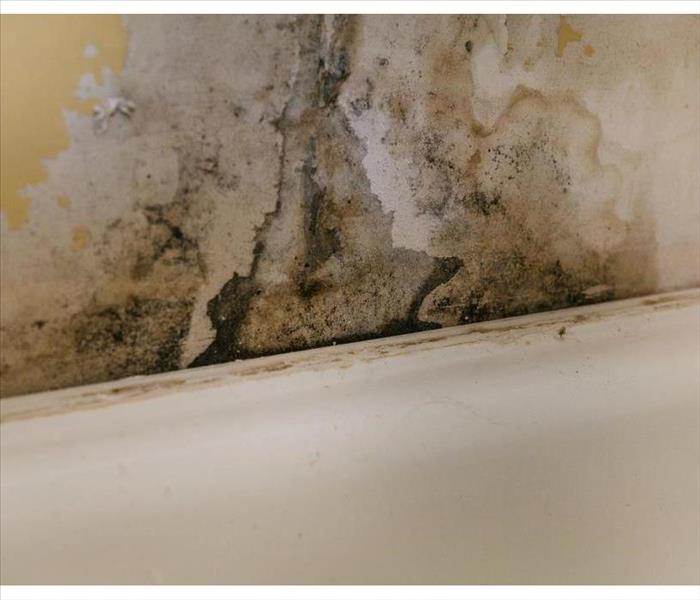 Water damage can lead to mold growth if not attended quickly.
Water damage can lead to mold growth if not attended quickly.
What Elements Affect the Rate of Mold Growth After Water Damage?
If your commercial building has sustained water damage of any type in Baker, LA, it's important to act as quickly as safely possible. Mold can begin to appear within 24-48 hours after the water event occurred. Since you can't possibly tackle everything at once, the important question is: does mold grow at the same rate on every surface? Knowing what factors impact the rate of mold growth will help you to establish a plan for having the mold cleaned up. Keep in mind that with so many types of mold, it's important to leave mold clean up to a trained mold removal and remediation specialist who knows how to safely assess the extent of damage that has occurred.
1. Building Material Composition
Different types of materials are more or less susceptible to rapid mold growth depending on their composition. Natural building materials provide a nutrient source that promotes the growth and spread of mold. Porous materials such as drywall and insulation can also provide food sources for mold since they trap moisture and dust.
2. Water Activity
If you've had a flood, whether due to a natural disaster or a burst pipe, it's pretty obvious that since your space has water damage, there's a good environment for mold growth. However, even high humidity levels can cause mold to grow in your building. Mold prevention in these spaces usually involves running a dehumidifier and checking for places where water may be penetrating the building, such as around windows, under doors, and around pipes.
3. Temperature
Mold will grow the most rapidly at its ideal temperature, which is about 77 degrees Fahrenheit, though certain types can still grow at temperatures as low as 19 degrees. By maintaining a consistent temperature and humidity level, you can prevent mold-friendly environments.
There are a few factors that contribute to the speed at which mold grows even after water damage has occurred. Acting quickly can help to mitigate major problems for your business.
How to Properly Dry Important Documents After Water Damage
6/26/2022 (Permalink)
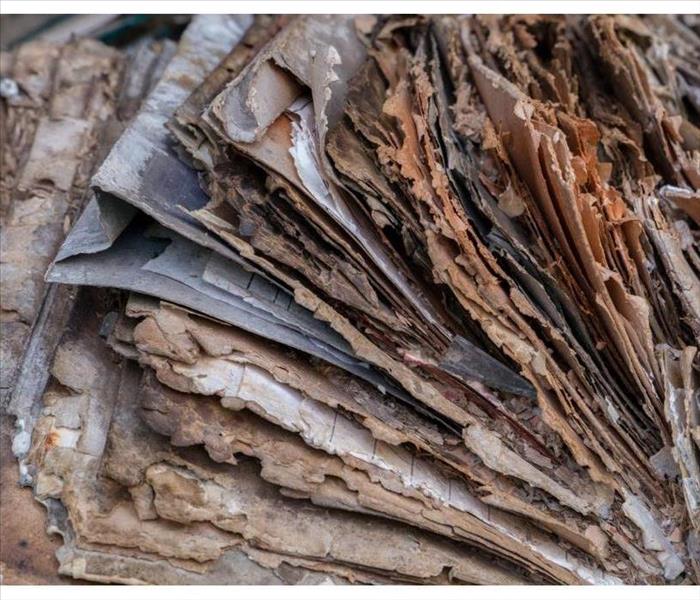 Wet documents can be salvaged with the help of water damage restoration experts.
Wet documents can be salvaged with the help of water damage restoration experts.
How to Dry Important Documents Properly After Water Damage
Water damage can hit businesses hard. Not only can it require repairs to the building, but also poses issues if important documents seep in moisture. Luckily, wet documents can be salvaged with the help of water damage restoration experts. Here are a few techniques the document drying process consists of in the event your Baton Rouge, LA, business be impacted by water.
1. Freezing Wet Documents
After any flooding event, locate any wet papers of value and get them to a freezer. Taking swift action here will prevent the growth of mold and stop rapid deterioration of the paper. Once you have the document frozen, restoration experts can transport them to a facility with state-of-the-art technology that allows these items to be restored to their prior condition. A specialized vaccuum-dry freezer is used to draw out any moisture from the paper, a method which is commonly used for restoring some museum archive items.
2. Gamma Irradiation
Depending on how much moisture an item retained and the contamination level of the water it had contact with, it's a possibility that molding or bacterial growth has occurred. To alleviate this, experts rely on a process known as gamma irradiation. This entails using powerful radiation to destroy any microorganisms and sterilize the item at hand.
3. Digitize Documents
With proper freezing and radiation, most items plagued by water damage can be restored. But to provide extra peace of mind, digital copies of impacted documents are often created. This gives relief to many business owners who don't have to compromise their documentation again in the event of future water or fire damage.
While it may seem that any papers that get caught in water are a lost cause, wet documents can be dried and saved. Immediate freezing helps preserve them before undergoing gamma irradiation and digitizing to complete the restoration process.
3 Steps To Take After A Sewage Backup
6/18/2022 (Permalink)
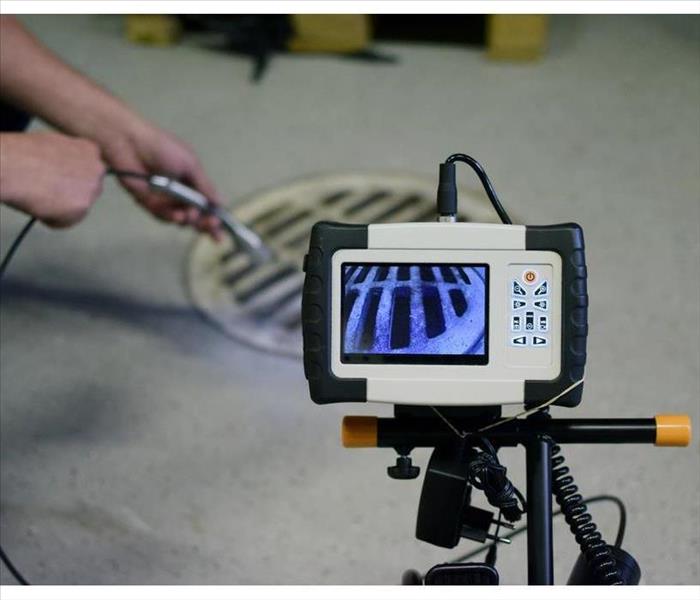 Plumbers will use a specialized camera that they place into the pipes and can locate the problem in the area.
Plumbers will use a specialized camera that they place into the pipes and can locate the problem in the area.
Three Steps To Take After A Sewage Backup
Whether you have a clogged main sewage pipe or your sewer system gets overwhelmed after a severe storm with significant floods, you could face a sewage backup. When that happens to your Monticello, LA, home, you need to know what to do to keep your family safe. Here are three steps to take after a sewage backup.
1. Call a Plumber To Determine Why the Sewer Backup is Happening
When you find a sewage backup in your home, you first want to call a plumber to determine why the sewer system has backed up. The plumber will use a specialized camera that they place into the pipes and can use to locate problem areas. If you have a clog, they will clear the clog at that time. If your system was overwhelmed by heavy rainwaters, you'll need your system pumped to prevent further problems.
2. Determine if the Area is Safe to Go Into
When dealing with a sewer backup, it's essential to evaluate the situation before you attempt to start cleaning up. If your problem is limited to a simple bathtub backup, you'll be fine to handle things yourself. Ensure that you use protective equipment and a bleach-water solution to clean and sanitize your bathtub. However, if the sewage spill is more widespread, always err on the side of caution and contact a water damage restoration company to clean up for you. The longer the sewage sits, the more widespread the damage will be, so contact a company as soon as possible.
3. Stop it From Happening Again
Regular maintenance of your system is vital to help prevent a sewer backup. Have a plumber scope your pipes and remove any buildups or clogs every year. If you have a septic system, ensure that you keep your gutters clean of debris to avoid flooding your drain field, which could cause your septic system to get overwhelmed.
Dealing with a sewage backup can be a stressful situation. However, following a few simple steps and relying on the pros will help you get your house back to normal in no time.
After a Flood: The Do’s and Don’ts
6/3/2022 (Permalink)
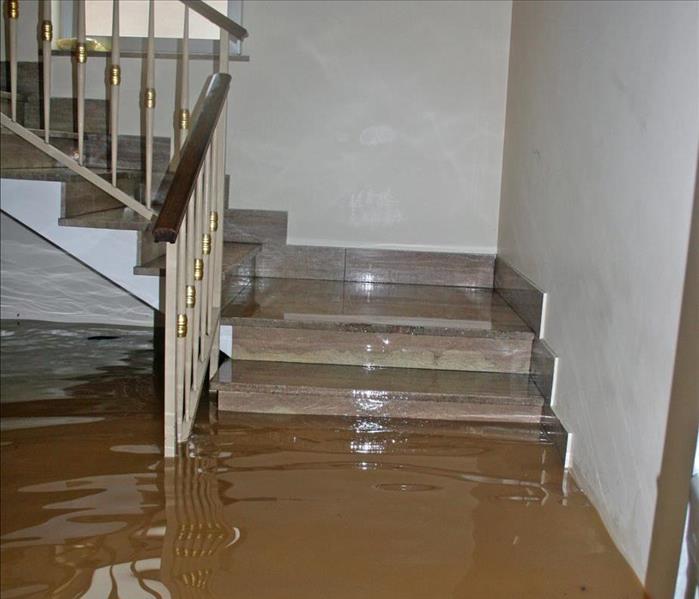 Flood damage in a home in Zachary, LA.
Flood damage in a home in Zachary, LA.
The Do's and Don'ts After a Flood
After a severe storm ravages Zachary, LA, safety should also come first. While you may be eager to determine the amount of damage your home has received from flood water, wind and other issues, some key things should and shouldn’t be done.
Flooded Home Do’s
If your home has sustained significant flooding, it is best to evacuate and not re-enter until it is deemed safe by the professionals. Once you have been given the go-ahead to re-enter, below are a few steps that should be taken next:
Document the damage for your insurance company. This includes taking videos and pictures, as well as retrieving important documents.
Any food, medicine or other consumables that have been touched by flood water should be discarded.
Verify that water is safe before drinking. If you are not certain, boil it beforehand.
Open doors and windows to get enhanced airflow.
Avoid using any electrical equipment that could have sustained damage.
If possible, begin extracting water and drying out affected areas.
Water Damage Don’ts
Knowing that safety is of the essence, avoid just imping in and tackling the water issues. If there is extensive water in the home, it is best to contact a certified mold, water and storm damage restoration company for an assessment and to handle the cleanup process. Stormwater often means that there are potential toxins, contaminants, microorganisms and other substances that will require specific safety gear and industrial-grade equipment. Water may also be lurking in hidden areas. Even if you think you have cleaned up a small issue, there could be mold starting to grow out of sight. When getting your home back to preloss condition is the priority, it’s best to let the experts handle the mess.
After the flood water starts to go down, it’s easy to want to rush in and start the cleaning process. Keeping safety in mind and following the above tips helps ensure the cleanup process goes safely and smoothly.
3 Tips for Fire Hazard Mitigation While Cooking
5/30/2022 (Permalink)
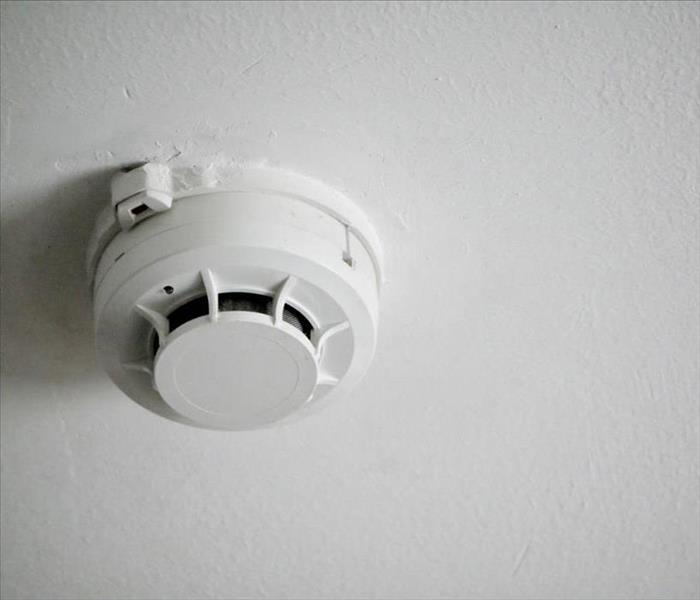 Smoke detectors can alert you to the danger so you can evacuate in time.
Smoke detectors can alert you to the danger so you can evacuate in time.
Three Tips for Preventing Fires While Cooking
According to the National Fire Protection Association, from 2014 to 2018 U.S. fire departments were called to approximately 172,900 home fires connected to cooking activities. Kitchen fires are the leading cause of residential fires in the nation and can result in serious fire damage that may require the services of a professional restoration business in Baker, LA, to deal with. It is important to take safety precautions to lower the likelihood of a devastating event like a grease fire occurring. Here are three tips for doing so.
1. Keep Flammable Items/Substances Away From the Cooking Area While Cooking
If you have your stove or oven on, combustible things like wooden utensils, oven mitts, oil-coated spatulas and food wrappers can easily go up in flames, so it is important to move them out of the danger zone. Grease splatters, puddles and buildup also easily catch fire, so it is important to keep your work area clean.
2. Install the Appropriate Equipment
There are some things your home needs in case of a fire:
- Carbon monoxide monitors
- Smoke detectors
- Fire extinguishers
Having these valuable tools can help you identify and handle such situations before they become too severe, or at least alert you to the danger so you can evacuate in time.
3. Don't Leave Fires Unattended
This is one of the most important tips. You do not ever want to walk away from cooking food. If you need to take a phone call, go to the bathroom for a prolonged period of time or leave the proximity for some other reason for longer than a couple of minutes, you should turn the range or stovetop off.
These are not the only fire safety tips you should heed. However, they are important ones. Fire, and by extension cooking, is not something to be taken lightly. Because of this, it is best not to cook while tired or distracted, particularly if you are frying something or using grease.
How Security Fencing Will Protect Your Commercial Property After a Fire
5/25/2022 (Permalink)
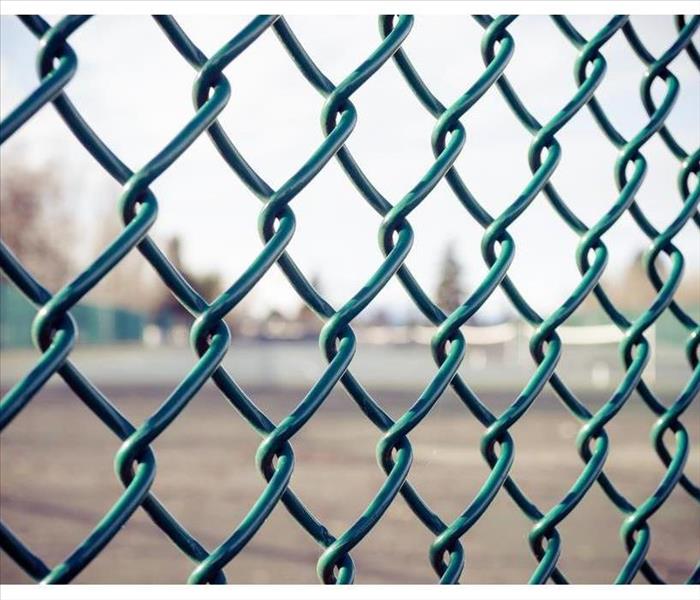 A security fence acts as a great deterrent.
A security fence acts as a great deterrent.
How Would Security Fencing Protect Your Commercial Property?
If you are dealing with the aftermath of a devastating fire or another damaging event on your commercial property, there are many issues you must handle. In addition to making renovations and covering costs, you must also consider protecting the property from further damage.
Advantages of a Security Fence
There are many reasons to install security fencing around your property before you begin renovations to your building.
Safety Concerns - Curiosity entices many people, both young and old, to explore a deserted structure. Damages caused by fire will undoubtedly present many opportunities for injury. Tripping over broken structures or falling into crevices are only a couple of the concerns. Someone who is injured may also seek legal counsel, which could be very costly to your business.
Vandal Issues - There are those who may look to benefit from an unprotected building by stealing anything that could be salvaged. A security fence acts as a great deterrent.
Wild Life Concerns - Many small animals, such as raccoons and mice will more than likely occupy the open space very quickly. This can cause more damage to the property.
Insurance Compliance - Some insurance plans require that the property is secured with fencing before renovations can begin. A non-fenced area can become more damaged and cost more to renovate. In this case, the insurance company may not cover any of the damages after a fire at your property in Baton Rouge, LA.
Steps to Take When Installing a Fence
Talk with your insurance agent about the optimum fencing for your location. They will consider many issues when determining the best fit, including the property location and the size of the overall property. Wire mesh and chain link options are two of the choices available. Your fire restoration service can help you install the security fence.
Keep your building protected and reduce further damage after a fire with secured fencing around your property.
How To Keep Water Heaters in Good Condition
5/20/2022 (Permalink)
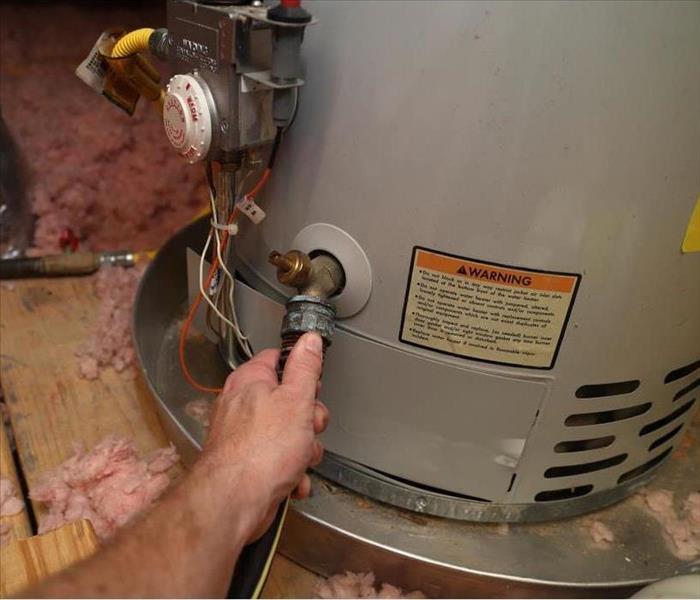 Flushing a water heater
Flushing a water heater
The last thing you want while taking a shower is cold water gushing out of the showerhead. Your first inclination may be to buy a new heater. There are easy instructions, however, that can help prolong the life of your heater in Monticello, LA, for many years.
Routine Maintenance on Your Water Heater
Conducting routine maintenance on your unit will reduce the risk of failure. If your heater malfunctions and you experience water damage, call a water restoration expert right away.
Test the Temperature-Pressure Release Valve - This valve regulates the pressure and temperature in the tank. To test it, put a pail below the discharge pipe. If water isn't released when you lift the lever, the valve must be replaced.
Check Electrical Connections - Periodically inspect the connections to ensure the unit is working properly.
Clean Sediment Within the Tank - As sediment builds up inside the tank, it can block the pipeline. If left unattended, it can also create cracks in the tank. Flushing the tank will reduce these risks.
Steps on Flushing a Water Heater
Performing a water heater flush may sound complicated, but it is really quite simple if you follow these steps.
Make sure the heater is turned off, then locate the drain valve and attach a garden hose to it.
Open the drain valve to release the water. While the water is flowing, turn on the hot water faucet in the kitchen or bathroom.
After several minutes, close the water supply valve and allow the water to continue draining until it stops
Once completely drained, make sure all of the valves are closed. At this point, turn the water supply on.
Check the faucet and wait until the water begins flowing smoothly again. This means that the water heater tank is full.
Turn the power and heating element back on.
Perform some routine maintenance on your heater to keep it running smoothly for years.
4 Tips for Preparing Your Business's Exterior for Storms
4/23/2022 (Permalink)
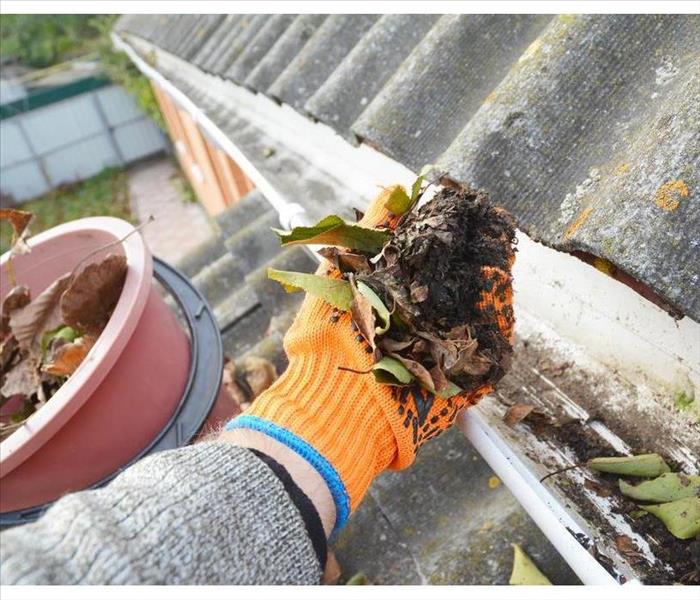 Keep your gutters clean.
Keep your gutters clean.
Four Storm-Proofing Tips for Your Business's Exterior
Your commercial business insurance and relevant riders are all lined up to carefully cover your company for this year's stormy season in Zachary, LA. Your employees are knowledgeable about all of your safety protocols, and you've inspected the interior of your site for vulnerabilities and moved all important documentation out of potential flood zones. How about exterior maintenance? While it might feel like a lost cause to try and perform any repairs or make improvements when big storms are imminent, protecting your building from the outside can make a big difference in how well it withstands a storm's lashing. Here are four tips.
1. Secure Loose Objects
Complete a thorough exterior building inspection, starting with loose objects that could be tossed by winds and cause more damage. Antennas, trash cans, hanging signs, and benches could all become projectiles that damage your building. Secure them outside or bring them indoors.
2. Protect All Glass
From individual windows to large glass storefronts, protect your business by using storm shutters. There are many types available at various price points. At the very least, use duct tape over the glass to prevent shattering.
3. Clean Out Downspouts
Cleaning downspouts, gutters, and drains is probably a part of your regular exterior maintenance routine, but going over them an extra time right before a big storm ensures that water can drain away from the building properly.
4. Look for Entry Points
Keeping your building maintained regularly ensures that you don't have huge repair projects right before a storm. Check the roof, windows, doors, and foundation for any possible points of entry for water. Plus, if you do have to call a water damage restoration company to help clean up after a storm, you can be sure that the damage was a result of the storm and not poor maintenance.
Exterior maintenance of your building is an important part of your storm preparedness plan.
Mold Standards You Need To Know Before Commercial Mold Clean Up
4/18/2022 (Permalink)
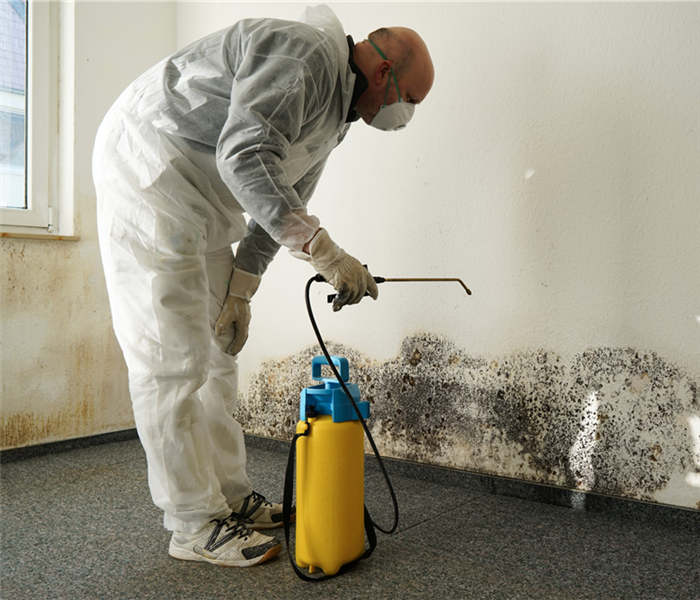 Mold clean-up services in Baker, LA.
Mold clean-up services in Baker, LA.
Mold Standards
When hiring experts to clean up a mold issue in your commercial business, you expect them to be aware of mold standards. However, it's important to be aware of these standards, yourself. Slipups can cost you financially, as well as lead to the regrowth of the mold that was causing the problem in the first place. Educate yourself on the rules and regulations to be safe.
Standards for Professional Mold Clean Up
If you bring in an honorable professional mold remediation team, they will not skirt around important regulations. It's your responsibility as a commercial business to make sure that the experts you bring in are holding up their end of the bargain. Some resources that you can acquire on mold standards include:
- The ANSI/IICRC S520 - Mold Remediation -
- Third Edition: 2015
- EPA guidelines for mold remediation in schools and commercial buildings
- OSHA's Mold Standards
These documents are up to date at the time of this article's publication but always check for the newest edition. Also, it's important to be aware of the state plan in Baker, LA and whether or not it is OSHA-approved. This means that it is up to par or better than the standards outlined by OSHA.
Examples of Standards Set Forth
The availability of the documents above varies. Here are some examples of what you will find in the aforementioned resources:
- Safety tips
- Inspection and determination standards
- Regulatory equipment, tools, and materials
- Principles of mold eradication
The list goes on! The experts you bring in should already have knowledge of these standards. If they do not follow the standards set forth in your state, you can take action.
Why This Is Important for Mold Clean Up
Mold overgrowth can have devastating ramifications for a commercial building. The structural and property damage is not worth skipping out on reading a few legal documents. If standards aren't met, you're faced with the chance that black mold will reappear, and the mold clean-up process will have to start all over again. Educating yourself and your business can save valuable time and resources down the line.
Protecting Your Business From Flood Damage
4/5/2022 (Permalink)
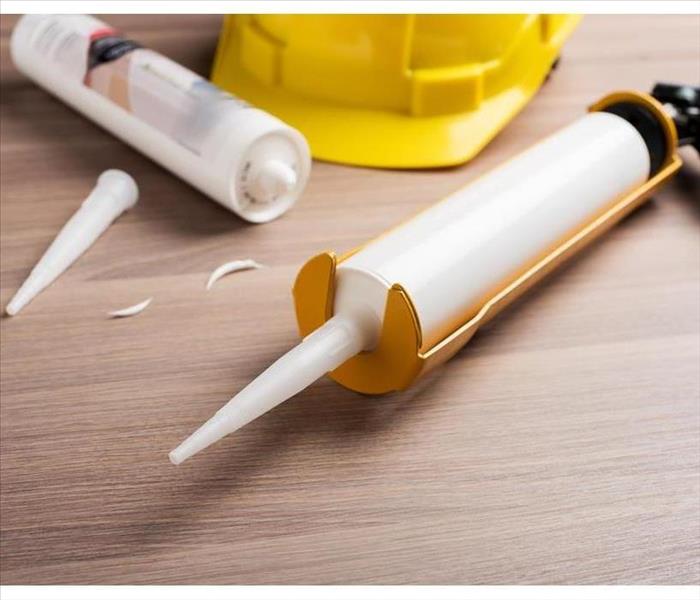 You can also help protect yourself by sealing any cracks in the outside of your building.
You can also help protect yourself by sealing any cracks in the outside of your building.
Flood Damage Protection for Your Business
If you own a business, you know you need to protect your building from flood damage. Fortunately, there are a few ways that you can do this in Baton Rouge, LA.
Have a Plan
One of the most important ways you can protect your business from a flood is to have a clear plan for what happens if it is going to flood. This plan should:
- Be comprehensive
- Encompass before and after the flood
- Have vital information on what to do
Keep your flood plan on-hand or in an accessible place.
Keep Vital Information On-Hand
You will need to keep important information like insurance policies and the number of a storm damage remediation company in a separate location. This can help you get things started even before the floodwaters recede.
Prepare for Flooding
You can prepare for flooding by keeping some flood supplies on hand. You can easily store absorbant flood barriers and plastic sheeting.
Keep Electricity Away From Water
Whenever possible, move your electrical outlets to water safe heights. You should also keep all electronics like computers and printers off the floor. If it is safe and you suspect that it might flood, consider shutting down the power to any electronics and unplugging them. This will help to protect them against flood damage.
Use Flood-Resistant Landscaping and Materials
If you have the choice, choose flood-resistant materials to decorate your office. Most of these materials can survive around 72 hours in the event of a flood. This can save you time and money when you want to return to normal business operations.
Decorate your premises with native landscaping. Native plants help provide a barrier and can survive a flood if it is something normal for your area.
Seal the Cracks
By using water-resistant materials, you can also help protect yourself by sealing any cracks in the outside of your building. This will keep water from seeping in.
Protecting yourself against flood damage is important in all areas. If you follow these suggestions, they can help you get back to business faster.
3 Fire Extinguisher Facts Every Business Should Know
3/25/2022 (Permalink)
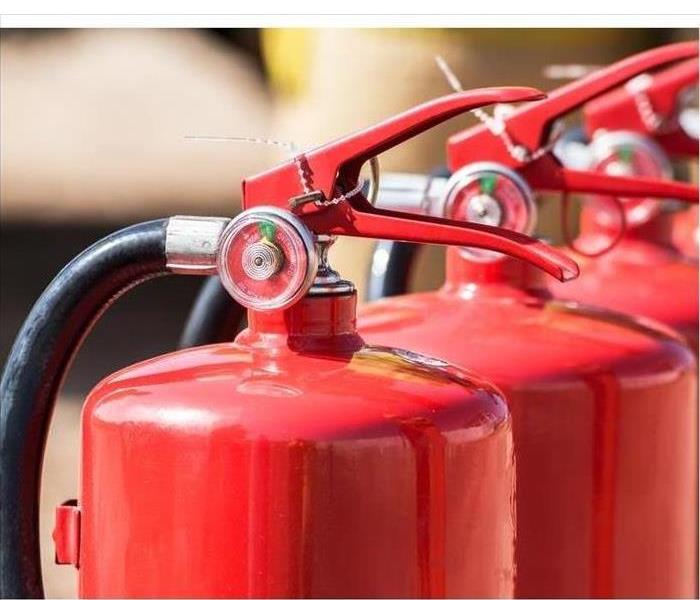 A fire extinguisher is designed to battle specific types of infernos.
A fire extinguisher is designed to battle specific types of infernos.
3 Fire Extinguisher Facts
A fire extinguisher is a crucial piece of safety equipment that can save lives and spare commercial properties from extensive damage mandating professional cleanup and restoration. Because of this, every business in Monticello, LA, should maintain at least one functional device. To ensure it’s readily available in an emergency, every owner and manager should also recognize three key facts about this vital fire suppression tool.
1. Device Doesn’t Last Forever
Extinguishers do not have an indefinite shelf life. Unfortunately, they also do not typically come with an expiration date sticker.
To determine the viability of your device, you should complete annual inspections and check for compromised components. Specific defects that may make it unusable include a broken handle, missing locking pin or a cracked nozzle. The gauge should also be in green. If it’s not, replace the device.
2. Multiple Types Exist
A fire extinguisher is designed to battle specific types of infernos. Class K units, for example, can douse a kitchen fire sparked by grease while a Class A device is designated for use with blazes involving ordinary combustibles, such as wood and paper. Additional distinctions include Class C for electrical fires and Class B for flammable liquids.
Attempting to smother flames with the wrong type of device can be ineffective. To combat this potential dilemma, evaluate your company’s specific fire risks and purchase your extinguisher accordingly. Check the canister’s label to confirm the class. You can also purchase a multipurpose device, which can be used against a variety of blazes.
3. Should Be Accessible and Visible
Minimizing fire damage requires prompt action. To ensure an expedited response, mount your extinguisher in a safe, accessible place and post signage to identify its location. You should also ensure staff recognize this area and refrain from blocking the site.
Because an inferno can erupt suddenly, having a functioning fire extinguisher easily accessible is a crucial safety strategy. Understanding key aspects of the device can ensure it’s in prime operating condition and ready to perform in an emergency.
Pretesting, Innovative Tools Help Salvage More Damaged Property, Belongings
3/11/2022 (Permalink)
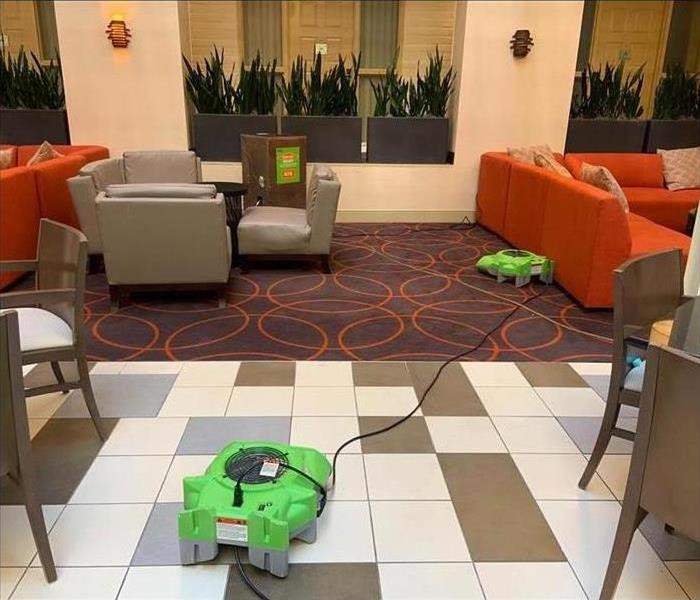 Restoration services in Zachary, LA.
Restoration services in Zachary, LA.
Pretesting, Innovative Tools Help Salvage More Damaged Property, Belongings
If your commercial property in Zachary, LA, sustains a water loss, the initial scene can be overwhelming. While it may seem like little is salvageable and your insurance claim will be over the top, a certified mold and water damage and restoration company will have the tools and expertise to perform pretesting and make a restoration plan to minimize claims and get your property back to “Like it never even happened.”
Inspection
Even though you may already have damage, a key to minimizing costs is ensuring it doesn’t spread. After calling a professional, they will quickly respond to start the saving process.
Within four hours, a technician will arrive on-site to assess the damage and develop a mitigation plan.
The professional will clearly explain the assessment and plan, ensuring you have a clear understanding of the process.
After the on-site visit, the professional will communicate the scope of the project with your insurance agent or claims adjuster.
Pretesting will be done to determine if items can be restored.
Restoration
Once the cleanup and restoration process begins, certified professionals have an arsenal of tools and techniques to clean, repair and restore the structure and many of the items within it. These include:
Moisture Detection: This is used to measure and monitor moisture levels, including detecting hidden water.
Water Extraction: To speed up the drying process, portable or truck-mounted extraction equipment will be used to pump out high levels of water.
Drying: Industrial-strength humidifiers and air mover are used to eradicate leftover moisture from throughout the structure.
Cleaning and Deodorizing: Salvageable belongings will be removed and taken to a secure location to clean and remove odors. Different methods will be used depending on the item, such as dry, immersive or wet cleaning. Air scrubbers, thermal foggers and anti-microbial treatments are used in the property to eliminate odors and sanitize.
A water loss may seem like a difficult situation to get out of, but taking quick action and pretesting damaged items ensures more can be restored instead of replaced.
3 Steps To Stop a Continuously Flushing Commercial Toilet
3/1/2022 (Permalink)
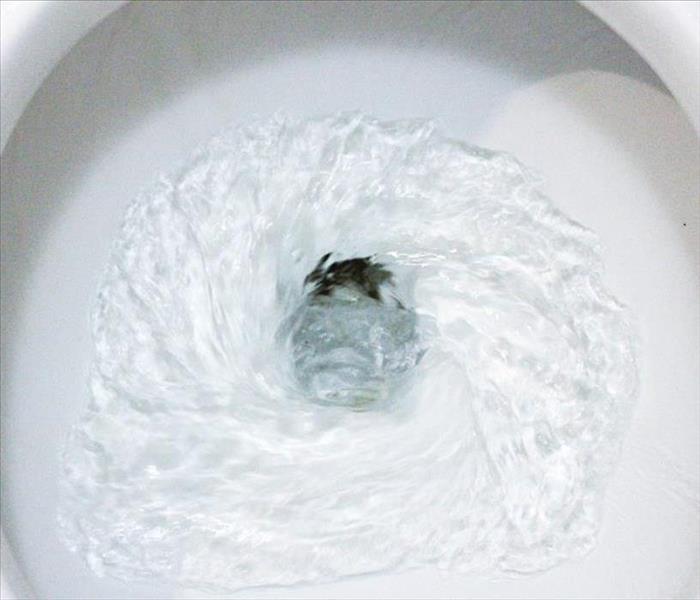 These steps can help your toilet from flushing continuously.
These steps can help your toilet from flushing continuously.
3 Steps to Stop a Commercial Toilet From Flushing Constantly
Commercial toilets flush by using a water-diverting device called a flushometer. This device enables tankless toilets, which are optimal for high-use bathrooms. If you manage a business property in Baker, LA, you probably have this type of fixture. Most of the time they operate smoothly, but sometimes they can accumulate built-up sediment that leads to a toilet overflow. When this happens, the flushometer does not stop flushing. Although flooding can be a daunting problem, there are simple steps you can take to clean out a typical manual flushometer and stop a toilet from flushing.
1. Take Apart the Flushometer
First, find the slot for a flathead screwdriver on one side of the flushometer. Turn the slot to shut off the water. Next, remove the top lid of the flushometer by loosening it with a wrench and then twisting it completely off. Placing a soft buffer material between the jaws of your wrench and the flushometer’s top lid can prevent scuffs.
Once the top lid is removed, you can unscrew and remove the flange cover. This should be done slowly and carefully, as trapped water may be released upon opening.
2. Clean the Gasket
Once the flange cover is removed, you can see the gasket. There will likely be a lot of sediment built up. This is typically the root cause of toilet overflow. Remove the gasket and clean it thoroughly, washing off all sediment. There may be a tiny opening called a weep hole. Use a small object to clear out this hole, being careful not to expand it in the process.
3. Reassemble, Test and Restore
Reinsert the gasket, and put the flushometer back together by reversing the steps of disassembly. If the problem persists after the water is turned back on, you will need to replace the gasket. If damage is sustained from the toilet flood, a local restoration and cleanup specialist can help get your property back in top shape.
These steps can address a toilet overflow in manual flushometers. Keep them in mind to avoid water damage in your commercial building's bathroom.
What Does SERVPRO Do To Help With Insurance Claims?
2/23/2022 (Permalink)
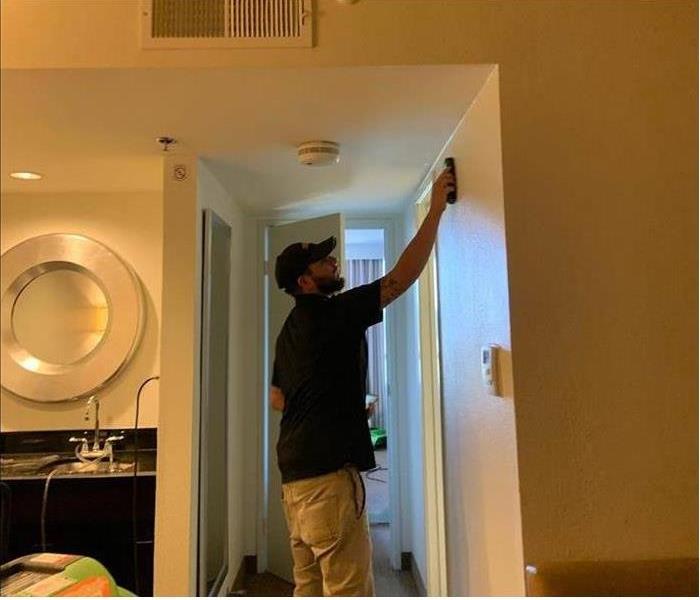 When you need an emergency response cleanup and repair team, there are plenty of choices. But few can do what SERVPRO offers.
When you need an emergency response cleanup and repair team, there are plenty of choices. But few can do what SERVPRO offers.
How Can SERVPRO Assist With Insurance Claims?
When the unthinkable happens and your worst nightmare comes true with a flood or fire in your home, help is available to get your through the ordeal. Different key groups play important roles to ensure you can stay in or return to your home. Firefighters, disaster cleanup and restoration professionals, and your insurance company will do their part to make this ordeal as pain free as possible. If you choose an experienced, reputable restoration team such as SERVPRO, they’ll make sure claim services go smoothly.
SERVPRO Specialties
When you need an emergency response cleanup and repair team, there are plenty of choices. But few can do what SERVPRO offers. The team will do the following for you:
- Work effectively with your insurance company to process claims.
- Come on the scene in a timely manner and complete the job quickly.
- Use best practices and techniques to clean up and restore your home.
- Provide excellent customer service.
Importance of Insurance Coverage
Even small floods or fires can cause costly damage to your Baton Rouge, LA, home. While you may not be able to replace all items, you can have peace of mind knowing that you shouldn’t have to front the bill. This is why you pay for reliable, reputable insurance. Claim services shouldn’t have to be difficult to work with. You can make things even easier when you hire the professionals at SERVPRO. They know how to work in tandem with your insurance agent. Because of the team’s efficiency and reliability, the insurance company can process your claims quickly and without issues.
What the Insurance Company Wants
Your insurance agent will ask for details of the incident and the extent of the damage. The repair and restoration team will conduct a thorough investigation and will assess the damage and what needs to happen to repair or replace it. The team will share these findings with the insurance company.
Don’t waste any time following a flood or fire. Call SERVPRO and your insurance agent for claim services immediately.
When Can You Enter Your Home After a Fire?
2/23/2022 (Permalink)
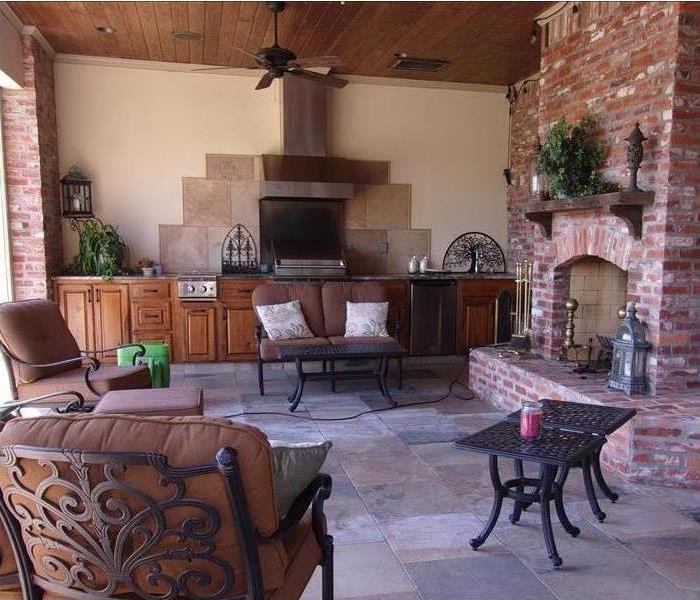 Did you know that SERVPRO offers fire damage cleanup and restoration services? Our crew is faster to any size fire damage disaster that might occur.
Did you know that SERVPRO offers fire damage cleanup and restoration services? Our crew is faster to any size fire damage disaster that might occur.
When Is It Safe To Return Home After A Fire?
If a fire started unexpectedly in your home and you were able to successfully escape, you are likely thankful for your safety but eager to try and rescue your belongings. Even if the fire has stopped burning or your home appears safe to enter, it is important you wait until a fire damage cleanup team can come to the site and assess the situation. Continue reading to learn when you can safely enter your home in Baker, LA, again after a house fire.
Steps To Take As Soon You Evacuate Your Home
As soon as you and all your family members escape your home, follow these steps:
- Call 9-1-1
- Get in contact with your insurance agent
- Call a fire restoration company to board up your home
What Is Emergency Board Up?
After fire damage has affected your home, there’s no way to know for sure if the structure is safe enough for you to enter. You will be able to enter home after it has been assessed and safely secured with board ups and tarp overs wherever necessary. This process involves boarding up broken windows and doors and placing tarps over a broken roof and areas with stability or leakage issues. This prevents further damage to your home, someone getting hurt, or someone easily gaining access to your home.
Who Can Perform an Emergency Board Up?
You should never perform a board up on your own. While you might want to reduce costs by doing the process yourself, you can create extensive damage to your home and put yourself at risk. It is in your best interest to wait until the fire restoration team can come and determine what action needs to be taken.
It is important to take all the necessary steps after a fire occurs in your home before you trying entering your home. Once you get into contact with the restoration company and they board up your home, you’ll be able to safely enter the house.
Do Tenants Have to Pay for Flood Damage?
2/23/2022 (Permalink)
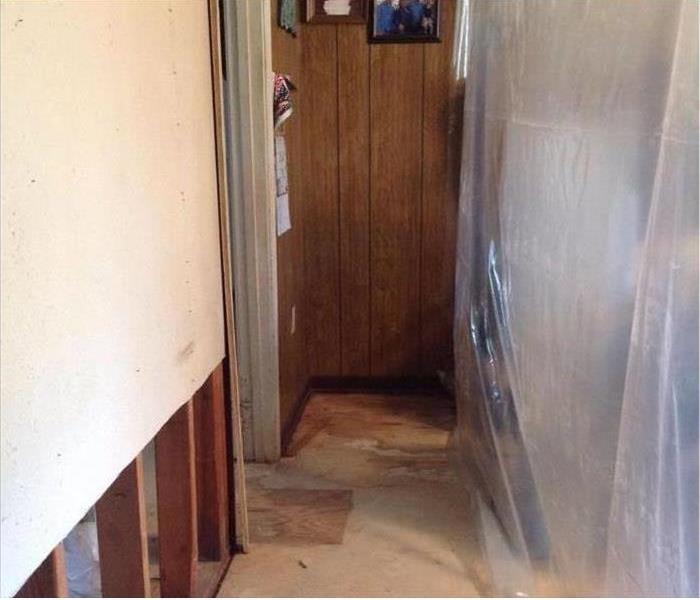 Recovering from flood damage can be difficult, especially when you need help to remove, repair, and restore damaged property.
Recovering from flood damage can be difficult, especially when you need help to remove, repair, and restore damaged property.
Is It Necessary For Tenants To Pay For Flood Damage?
If you rent a commercial property, you may be worried about insurance coverage in the event of a flood. Considering you don’t own the building, you may be uncertain on the type of renter’s insurance you need – or if you need renter’s insurance at all. Don’t get caught out when it’s too late and your property is already flooded; learn what you need to know about flood damage and flood insurance in Zachary, LA.
What’s Covered by the Building Owner
When it comes to renter’s insurance, the building owner is liable for insuring the actual structure itself. If any structural damage is incurred during a flood, then the building owner’s insurance will take over paying for any repairs and replacement. This generally includes damage to roofs, windows, walls, building systems, and external parking and fixtures.
What’s Covered by the Tenant
As the tenant, you are responsible for obtaining renter’s insurance for anything inside the building. This means any furniture, appliances, inventory, computer equipment, or other property specifically belonging to you. If your items are damaged in a flood, you should obtain appropriate insurance coverage to safeguard your belongings.
What If the Building Owner Supplies Equipment and Furniture?
Because those items are the property of the building owner, in this specific instance, they would also be covered under the owner’s insurance rather than the renter’s insurance. Nonetheless, you should discuss the extent of insurance coverage and expectations with the building owner ahead of time, well before a flood.
Recovering From Flood Damage
Recovering from flood damage can be difficult, especially when you need help to remove, repair, and restore damaged property. It’s not impossible, however, and a good business owners’ or renter’s insurance policy can make all the difference. Before shopping for an insurance policy, do a complete inventory of all equipment, merchandise, furniture, and other items that you would have covered by the policy before determining what’s the best policy for you.
What Causes Smoke Odor Damage?
1/26/2022 (Permalink)
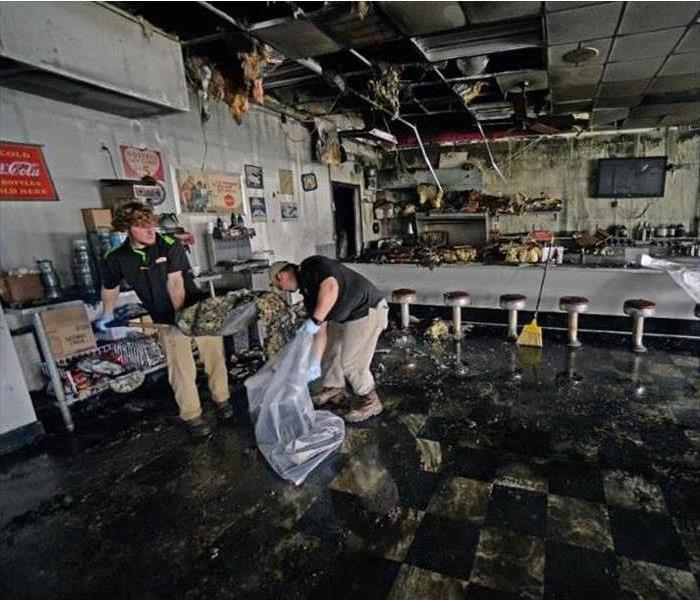 Commercial fire damage in Baker, LA.
Commercial fire damage in Baker, LA.
Causes of Smoke Damage
Smoke odor can be very persistent. If a smell lingers after a fire at a commercial property in Baker, LA, property owners or managers should identify and eliminate the sources of the odor. Here are several causes of smoke damage that can be eliminated through smoke cleaning.
Smoke Particles
Smoke particles can be as large as several microns and range all the way down to 0.001 micron. There are several ways to filter out larger particles:
- Air filters or purifiers
- HEPA filters
- HVAC air scrubbers
None of these methods will be able to eliminate the most miniscule smoke particles. It will be necessary to neutralize the odor of these particles in order to get rid of every trace of damage.
Lingering Traces
Very small smoke particles can cause odors to persist even after filtration. Smoke cleaning professionals use several odor neutralization methods:
- Ozone machines
- Hydroxyl generators
- Thermal fogging
- Vapor modification
All of these methods are effective for eliminating smoke smells. Ozone machines and thermal fogging work quickly, but require evacuation. Hydroxyl generators and vapor modification take longer to achieve the same level of odor neutralization, but treatment can continue while occupants remain in a structure.
Surface Residues
Smoke smells may also be due to residues found on surfaces such as ceilings, walls, furniture, or window blinds. Restoration experts may use chemical sponges or wet cleaning solutions on surfaces. Furniture and other textiles may benefit from dry-cleaning or foam treatments. These methods may remove discoloration and odors from items or materials that have sustained damage.
A smoke cleaning service can recommend solutions for eliminating particles, residues, and any traces of smoke damage lingering in a structure in Baker, LA. Property owners may need to document and maintain proof of damage in order to demonstrate the need for professional cleanup services. Smoke odor remediation may be covered by commercial property insurance policies.
What To Do When You Discover Water Damage
1/19/2022 (Permalink)
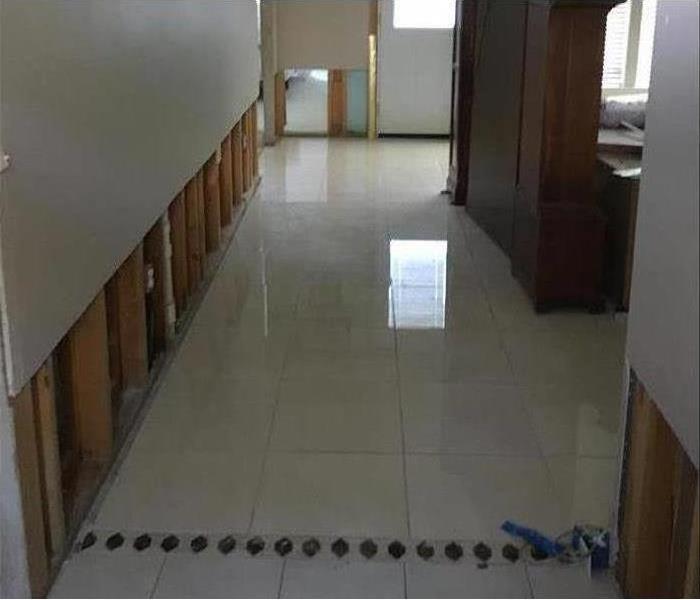 Water damage in Baton Rouge, LA.
Water damage in Baton Rouge, LA.
Steps To Clean Out Water Damage In a Home
Broken pipes, leaking pipes, a burst supply line, a poorly connected supply line, an aging appliance…there are countless factors in your home that may result in water damage, many of which you may not discover until after water has begun to pool in your home. Unfortunately, once you discover sitting water in your home, chances are that the issue has existed long enough to have caused extensive damage. While you cannot undo the damage that has already been done, you can act immediately to prevent further harm. Three steps you can take right away include the following:
- Shut off the water source.
- Look for safety areas and turn off circuit breakers if possible.
- Attempt to save contents.
If the damage is extensive enough, you may want to contact a Baton Rouge, LA, water cleanup team.
Turn Off the Source
It will not help you to clean up the water damage if you do not find the source and put a stop to the leak or influx of water. The source may be a leaking pipe, a poorly connected supply line or even an open window. Once you locate the source, shut off the valve or close it off somehow.
Turn Off Breakers
If you can do so safely, turn off power in all affected areas. An electrical current that comes into contact with water can create an even greater hazard and may put you and your home in danger. However, if turning off power means wading through a pool of water, leave it be and contact a professional.
Save Your Contents
If you can do so, remove items from the affected area and try to dry them out. Even if an item is not in direct contact with water, it is at risk of becoming moldy or rotted because of the excess moisture in the air. If electronics or electrical appliances sustained water damage, toss them out. Even if they look okay, using water damaged appliances is extremely dangerous and can cause a house fire.
Dealing with water damage is no fun, but it must be done. For help with more extensive problems, contact your Baton Rouge, LA, water cleanup team.
3 Tips To Prevent Mold
1/10/2022 (Permalink)
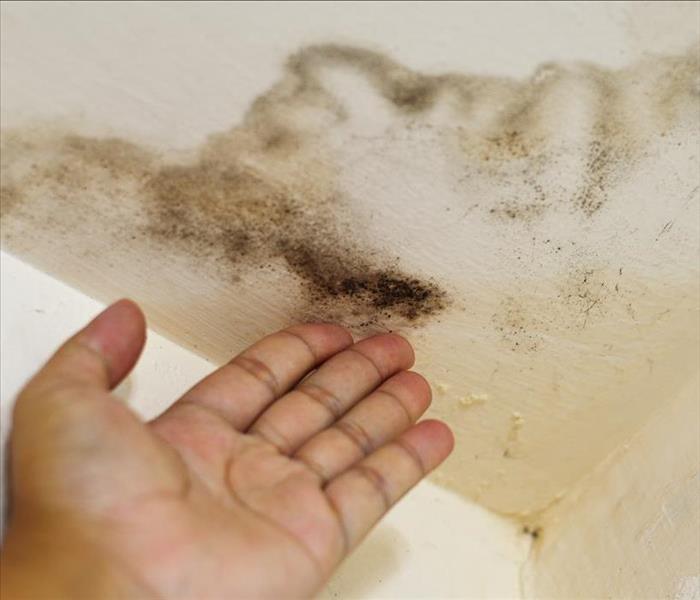 Keep your home free from secondary damage.
Keep your home free from secondary damage.
3 Mold Prevention Tips
Dealing with water damage in your home in Monticello, LA, sometimes makes it seem like a mold problem is inevitable. It may be easier to prevent mold than you think, though. You don’t have to resign yourself to recurring patches of fungus on your walls, carpet and ceiling. Follow these tips to keep these issues at bay.
1. Maintain Optimal Air Flow
Stagnant air can contribute to mold growth. If you do not have sufficient air flow in your home, mold spores are more likely to settle on surfaces. You are also more likely to have moisture problems, which exacerbate mold issues by giving it sustenance. Make sure that the areas of your home that are prone to excess moisture, such as the laundry room, kitchen and bathroom, are properly ventilated.
2. Pursue Quick Remediation
If your pipes spring a leak, a fast response is the best way to prevent secondary damage such as mold. Call mold remediation experts immediately whenever your home has water damage. It only takes a couple of days for spores to settle and multiply on surfaces in your home. The quicker you can make the environment less hospitable for fungus growth, the more likely you are to prevent the problem.
3. Keep Moisture Levels Down
Mold loves moisture, so it logically follows that minimizing moisture in your home can help with mold prevention. There are two main ways to do this. First, make sure you keep the humidity level at 45% or below. You can purchase a humidity meter at most hardware stores. Second, dry all affected items thoroughly any time you have a spill or leak. Allowing moisture to remain on surfaces in your home is an invitation to mold.
You may not be able to prevent water damage, but you don’t have to resign yourself to further issues such as mold infestation. Hire specialists who are faster to any size disaster to keep your home free from secondary damage.




 24/7 Emergency Service
24/7 Emergency Service

































